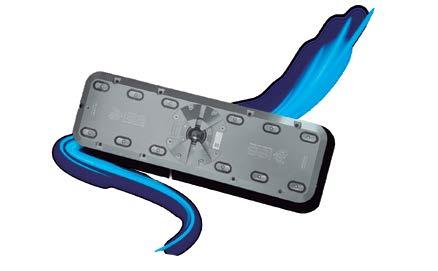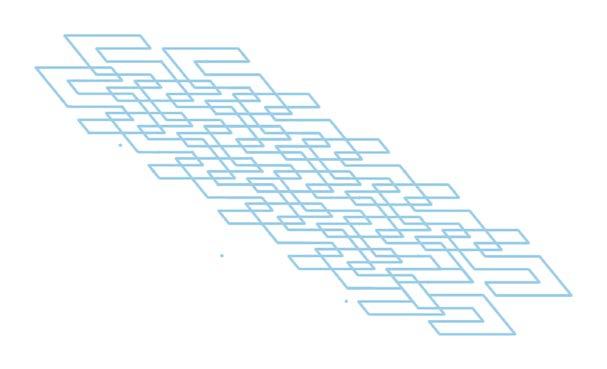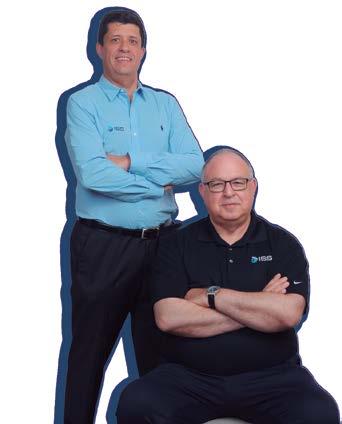Digital Economy:
Sultanate of Oman
Leading Cybersecurity
Industry Development in the Region

Mohammed Murad
How Saudi Arabia is Turning Cybersecurity into an Economic Engine



Digital Economy:
Sultanate of Oman
Leading Cybersecurity
Industry Development in the Region

Mohammed Murad
How Saudi Arabia is Turning Cybersecurity into an Economic Engine


Replace key bunches with one customizable, programmable key. Update mobile workers’ permissions via app. Trace every key use. Equip any access point. And never change your locks again.
eCLIQ makes your life easier. Scan the QR code to see how.
Experience a safer and more open world

56 ASSA ABLOY Aperio: ASSA ABLOY Advanced wireless locking technology Growing recognition of cybersecurity as a vital economic driver has pushed the sector’s expansion in the Kingdom beyond the usual confines of national security, making it foster innovation, encourage investment, and create job opportunities
50 HID Global The Rise of Mobile Access: Transforming Physical Security in the Digital Age
52 Uniview UNV’s New OwlView Series Paves the Way for the NightView 5.0 Era
Trassir TRASSIR and Suprema Join Forces
58 OFSEC 2024
a Glimpse of the Future of Fire, Safety, and Security in Oman

Professional media for complete security solutions
Management
Mahir Hodžić, General Manager mahir.hodzic@asmideast.com
Adis Hodžić, CEO adis.hodzic@asmideast.com
Editorial Staff
Mahir Hodžić, Editor-in-Chief mahir.hodzic@asmideast.com
Orhan Hadžagić, Associate Editor orhan.hadzagic@asmideast.com
Emily Lin, Contributing Editor Emily.Lin@taiwan.messefrankfurt.com
Mirza Bahić, Journalist editorial@asmideast.com
Nermin Kabahija, Journalist editorial@asmideast.com
Art Staff
Sanel Palislamović, Art&Design Editor sanel.palislamovic@asmideast.com
Nelmedin Kolubara, DTP&Art Design dino.kolubara@asmideast.com
Sales Amar Pap, Business Development Manager amar.pap@asmideast.com
International Sales Israel Gogol, International Sales Director Israel.Gogol@taiwan.messefrankfurt.com
International Associates Qatar – Mirsad Selimović, mirsad@techman.qa
a&s Middle East offers the latest news and insights on video surveillance, access control, intrusion detection, fire alarm, mechanical protection, man guarding, cyber security, artificial intelligence, IoT, big data, smart homes and buildings, industrial automation, information, communication technology to Middle East region professional channel players.
a&s Middle East is part of the media network of the Messe Frankfurt Ltd – Taiwan Branch, which offers several media platforms — asmag.com and a&s magazines, published in English, traditional Chinese, and three other languages, providing the most comprehensive industry trends, product, and supply chain information. The total annual circulation is approximately 515,000 copies around the globe. a&s Middle East is published 6 times a year, Jan/Feb, March/ April, May/June, July/August, Sept/Oct, and Nov/Dec.
Payment Instructions
Annual subscriptions are payable in USD, EUR, or AED. Subscription inquiries per your request.
EUR: AE340400000653005131002
Account No. 0653005131002
USD: AE070400000653005131003
Account No. 0653005131003
AED: AE610400000653005131001
Account No. 0653005131001
Copyright Statement
© Copyright by Privus Agency Ltd. All rights reserved. Any republication, copying, redistribution, or reproduction of the magazine in any form, including electronic, without the prior written consent of the publisher, is prohibited. Advertisers are solely responsible for the content of advertising material. The publisher bears no responsibility regarding possible legal, patent, content, or brand disputes of the advertiser.
Legal Disclaimer
The information in this magazine has not undergone any formal testing by Privus Agency Ltd. and is distributed without any warranty expressed or implied. Implementation or use of any information contained herein is the reader’s sole responsibility. While this information has been reviewed for accuracy, there is no guarantee that the same or similar results may be achieved in all environments.
Corporate Address
Privus Agency FZ-LLC
JT010006, Al Shohada Road, Ras Al Khaimah, UAE
Tel: +971 58 983 4258
Web: www.asmideast.com
Marketing: marketing@asmideast.com
Welcome to the eleventh edition of a&s Middle East, where we continue our mission to illuminate the path forward in security technology and innovation. In this issue, we tackle head-on the pressing challenges facing our industry in the Middle East and beyond while showcasing the cutting-edge solutions that promise to reshape our security landscape.
Our coverage spans the breadth of concerns, from the alarming rise in data breach costs across the Middle East to the groundbreaking advancements in biometric technology. We’re privileged to feature insights on cutting-edge solutions like Bosch’s AI-enhanced fire safety systems, along with contributions from industry leaders such as Mohammed Murad of Iris ID, who explores the fusion of face and iris biometrics, and Faisal Mohamed of ScreenCheck Middle East, who highlights innovative cloud-based access solutions supporting Saudi Arabia’s Vision 2030.
The challenges we explore, particularly the soaring costs of data breaches, underscore the critical need for new approaches to cybersecurity and security in general. Our analytical piece delves into this urgent issue, revealing that the Middle East now faces the second-highest breach-related expenses globally. This sobering reality serves as a call to action for our industry.
It’s in this context that we look forward to Intersec Saudi Arabia in October 2024. This premier event serves as a beacon and a gathering platform where challenges meet solutions. The convergence of global security experts, innovative technologies, and forward-thinking strategies at Intersec Saudi Arabia aligns perfectly with our mission at a&s Middle East: to not just report on security challenges but to actively participate in fostering solutions.
In essence, a&s Middle East and Intersec Saudi Arabia are united in a common purpose – to bridge the gap between security challenges and their solutions. By bringing together thought leaders, showcasing innovative technologies, and fostering dialogue, we collectively drive the industry forward.
Please visit our official website www.asmideast.com and select ‘Subscribe Now’ option under THE MAGAZINE menu.
Subscription includes all six editions. Digital edition is FREE and readily available at the official website.
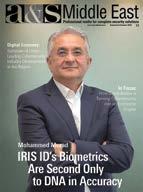
















The National Cybersecurity Authority (NCA) today launched the second phase of its CyberIC program, a comprehensive initiative designed to bolster the cybersecurity capabilities of the Kingdom.
The program aims to cultivate specialized national expertise in the cybersecurity sector and elevate the cyber preparedness of national entities. This aligns with NCA’s broader mission to foster the development of the cybersecurity industry and human capabilities, ultimately strengthening cybersecurity in Saudi Arabia.
The second phase of CyberIC focuses on six key areas: cybersecurity specialists and leaders, specialists in investigation and judicial authorities, specialists in fields related to cybersecurity, national entities executives, and students and recent graduates. The program seeks to empower around 13,000 individuals in the field of cybersecurity.
The program’s encompasses a wide range of cybersecurity disciplines, including data analysis, encryption, and

secure cloud computing, in partnership with Saudi Information Technology Company (SITE), NCA’s technical arm, and leading international universities.
The CyberIC program is a cornerstone
of the National Cybersecurity Strategy, contributing to the Kingdom’s efforts to protect critical infrastructure and government services through its focus on skills development and knowledge enhancement. n

Minister of Education Yousef bin Abdullah Al-Benyan and Saudi Data and AI Authority (SDAIA) President Abdullah bin Sharaf Alghamdi launched the “One Million Saudi in AI” initiative, aiming to empower 1 million Saudis in artificial intelligence (AI).
The initiative was launched in collaboration with the Ministry of Human Resources and Social Development during the third Global AI Summit (GAIN Summit 2024), held at the King Abdulaziz International Convention Center in Riyadh.
The national initiative, the largest of its kind in the Kingdom, aims to empower a million Saudis to interact with a world led by AI, ensuring the building of a better future that enhances human capabilities. It will allow a million male and female citizens to understand AI, its uses, ethics, and to train on the skills and tools necessary to integrate AI into business and daily life effectively and safely.
The SAMAI initiative constitutes a significant strategic step towards developing human capital in Saudi Arabia, achieving the aspirations of the leadership for the Kingdom to become a global leader in technology and innovation. n

The Dubai Electronic Security Center (DESC) has been praised in the World Economic Forum’s (WEF) latest *Cybersecurity Talent Framework* report for its significant efforts in bolstering the global cybersecurity workforce. Key initiatives, such as the Dubai Cyber Innovation Park and the Cyber Security Competency Framework (Qudraat), were highlighted for their role in empowering the next generation of cybersecurity professionals. DESC’s contribution aligns with ongoing international collaborations aimed at addressing the growing global cybersecurity talent shortage, which is estimated at 4 million professionals. The WEF acknowledged Dubai’s efforts, led by Dr. Bushra AlBlooshi, in fostering essential cybersecurity skills, enhancing workforce diversity, and
improving the understanding of cybersecurity roles.
Hamad Obaid Al Mansoori, Director-General of Digital Dubai, emphasized that these international partnerships enhance Dubai’s reputation as a hub for technological innovation and talent development. This recognition is part of Dubai’s broader mission to establish itself as a global leader in cybersecurity, ensuring a secure digital environment.
Through these initiatives, DESC is positioning Dubai as one of the safest cities in cyberspace, nurturing young talents with essential skills in the field and contributing to the global effort to tackle cybersecurity challenges.
For further details, the full report can be accessed on the WEF website. n
BlackRock, Global Infrastructure Partners (GIP), Microsoft, and MGX announced the Global AI Infrastructure Investment Partnership (GAIIP) to make investments in new and expanded data centers to meet growing demand for computing power, as well as energy infrastructure to create new sources of power for these facilities. These infrastructure investments will be chiefly in the United States fueling AI innovation and economic growth, and the remainder will be invested in U.S. partner countries.
This partnership will support an open architecture and broad ecosystem, providing full access on a non-exclusive basis for a diverse range of partners and companies. NVIDIA will support GAIIP, offering its expertise in AI data centers and AI factories to benefit the AI ecosystem. GAIIP will also actively engage with industry leaders to help enhance AI supply chains and energy sourcing for the benefit of its customers and the industry.
The partnership will initially seek to unlock $30 billion of private equity capital over time from investors, asset owners,

and corporates, which in turn will mobilize up to $100 billion in total investment potential when including debt financing. The founders of the partnership bring together leading global investors BlackRock, GIP, and MGX, an artificial intelligence and advanced technology investor,
with funding as well as expertise from Microsoft. GAIIP combines deep understanding of infrastructure and technology to drive efficient scaling of data centers, with energy, power, and decarbonization investment capabilities for related enabling infrastructure for AI. n

The global electronic home locks market size is expected to reach USD 5.68 billion by 2030, registering to grow at a CAGR of 8.1% from 2024 to 2030 according to a new report by Grand View Research, Inc. High demand for home automation and advanced security technologies, such as electronics home locks, is expected to be the key factors driving the market. Rising construction activities in developed countries including U.S., Germany, U.K., and France are also expected to assist in growth of this market.
Moreover, integration of innovative technologies, such as NearField Communication (NFC), Bluetooth, and voice and face recognition, is expected to boost the product demand. North America was the dominant regional market in 2018 and is estimated to retain its leading position throughout the forecast period. The growth is attributed to the rapid expansion of the construction industry, especially in residential sector, in the region. However, Asia Pacific is projected to witness the fastest growth over the forecast period due to high demand for advanced security solutions. The product demand is driven by the increasing residential construction activities, the trend of home automation, and disposable income levels in the region. In addition, a
Riyadh - Kaspersky announces the launch of its Industrial Control Systems (ICS) Security Assessment service, setting a new standard for safeguarding Saudi Arabia’s critical industrial infrastructure. With over 15 years of pioneering experience in OT and ICS se-

rising number of branded retail outlets, especially in India and China, is anticipated to contribute to the market in growth.
The keypad segment held the largest market revenue share of 45.8% in 2023, although the biometrics segment is beginning to show movement. n
curity, the launch reflects Kaspersky’s commitment to leading the charge in ICS cybersecurity whilst adhering to local security regulations.
Kaspersky’s ICS Security Assessment service is designed to scrutinize and address vulnerabilities at every layer

of industrial control systems, from physical and network security to vendor-specific vulnerabilities within ICS components, such as Supervisory Control and Data Acquisition (SCADA) systems. Kaspersky’s team includes penetration testers, reverse engineers, ICS security experts, and network security specialists, all of whom work to identify and evaluate risks and attack surfaces, providing clients with clear, actionable insights and a comprehensive understanding of their security posture. Detailed reports, crafted specifically for Security Operations Centers (SOCs), provide an easy-to-follow roadmap with timestamps, techniques used and tailored detection recommendations.
The latest Kaspersky statistics reveal a promising landscape: in Q2 2024, Saudi Arabia emerged as one of the least exposed countries in the region, with exposure levels notably below the regional average. Nevertheless, sectors like Construction, Oil and Gas, and Building Automation have shown higher vulnerability. n
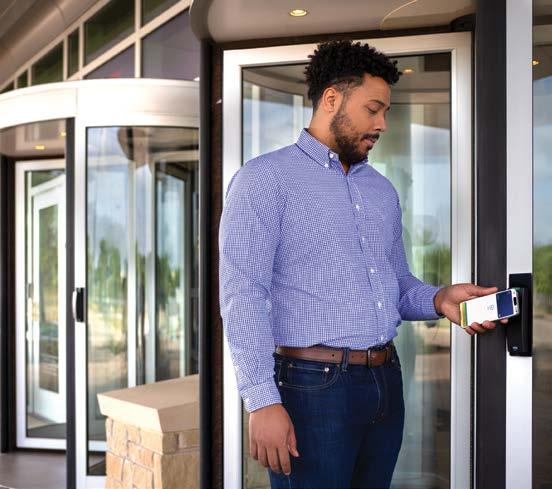
Your iPhone is Now Your Employee Badge.
With employee badge in Apple Wallet, staff and visitors can open office doors, access laptops, elevators, secure printers and much more using just their iPhone or Apple Watch. It’s another way HID is enabling secure, convenient workplace access.

Get started with employee badge in Apple Wallet at: hidglobal.com/applewallet
The Dubai Electronic Security Center (DESC) has introduced the Dubai AI Security Policy, a first for the region, aimed at building trust in AI technologies while addressing cybersecurity risks. This initiative was revealed during the Dubai AI & Web3 Festival 2024, where DESC participated as the official cybersecurity partner. The policy aligns with the UAE’s goal of becoming a global AI leader by 2031, as envisioned by His Highness Sheikh Mohammed bin Rashid Al Maktoum, focusing on AI integration in key sectors under the UAE’s National AI Strategy.
“This policy marks a significant milestone in the Center’s journey to realize Dubai’s annual plan, accelerating the adoption of AI applications and technologies in line with the directives of His Highness Sheikh Hamdan bin Mohammed bin Rashid Al Maktoum, Crown Prince of Dubai, Deputy Prime Minister and Minister of Defence, and Chair-

man of the Executive Council of Dubai.
It serves as a cornerstone in supporting the roadmap to enhance the quality of life in Dubai by integrating AI across all vital sectors, aligning with the goals
of the Dubai Economic Agenda (D33), which aims to double Dubai’s economy over the next decade and position it among the top three global economic cities,” added Al Shaibani. n
King Abdulaziz University has initiated a groundbreaking program focused on the integration of artificial intelligence (AI) in education and scientific research, marking the first of its kind among Saudi universities. This innovative program is designed to provide participants with in-depth knowledge of applying AI in areas such as data analysis, leadership, and management. The initiative aims to develop a clear vision and set strategic goals, policies, and future perspectives to align the educational and research processes with ongoing technological advancements.
Dr. Amin Yousef Noaman, Vice President for Graduate Studies and Scientific Research at King Abdulaziz University, underscored the vital role of AI in enhancing the learning experience and addressing the evolving demands of the job market. He emphasized that by equipping students with AI competencies, the university is helping them secure appropriate employment opportunities post-graduation. The program reflects the university’s dedication to re -
maining at the forefront of educational innovation by continually responding to emerging needs.
Spanning an entire semester, the program includes 50 hours of intensive training and 30 hours of assignments.
The sessions are led by a team of expert faculty members from the university, ensuring that students are well-prepared to effectively incorporate these advanced technologies into their academic and research work. n
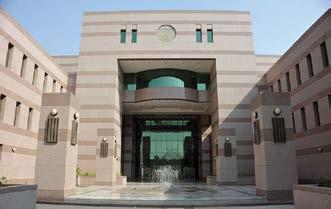
Download the new Aperio Brochure to learn more about Aperio Products.

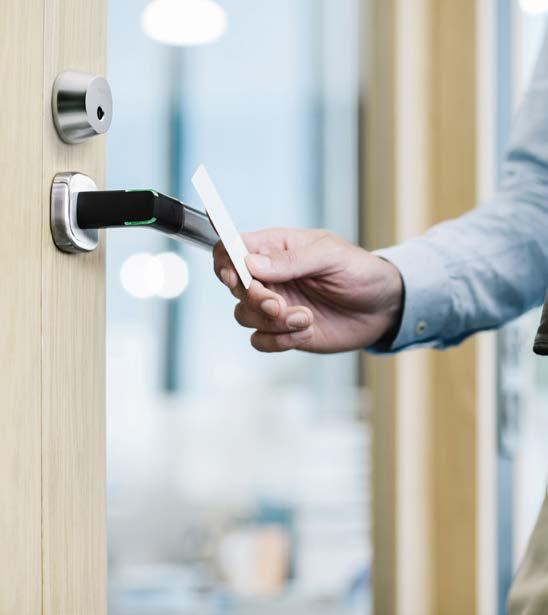

Upgrade any access system wirelessly or install wireless locks from scratch
Aperio H100 Electronic Handle
• Minimal door alterations
• A stylish handle in your door
• Achieve energy efficiency

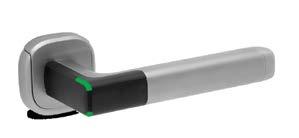



Hall 5, Booth D-24 with ALKURDI trading and contracting company





Mohammed Murad, Iris ID
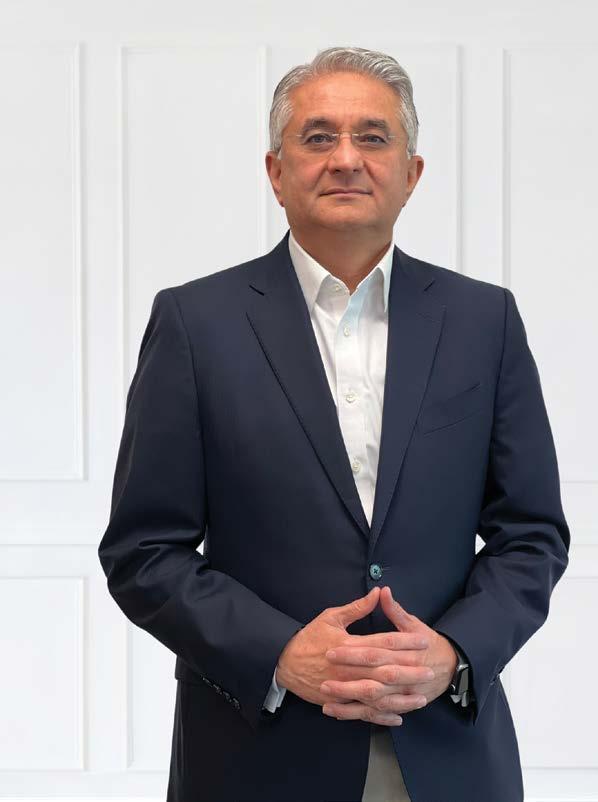
In an exclusive interview with a&s Middle East, Mohammed Murad, Vice President of Global Sales and Business Development at Iris ID, talks about his company’s pioneering technologies, the fusion of face and iris biometrics, and their global impact on security technology
n By: Mirza Bahić mirza.bahic@asmideast.com
a&s Middle East: Can you tell us about your career journey and how you came to your current role at Iris ID?
Murad: After finishing at The College of New Jersey with a degree in Computer Science and Mathematics, I started my career in development and integration. After a few years of experience, I joined an organization to provide post-sales system consulting which led me to try my knowledge in presales consulting to help sales and business development teams achieve their targets. That prepared me to run the global business at Iris ID. Since 2002 my journey at Iris ID has been amazing, it has been a very fulfilling experience and still going strong. Now Iris ID is a globally known brand in the iris biometrics space.
a&s Middle East: What are your main responsibilities as the Vice President of Global Sales and Business Development?
Murad: I manage Iris ID global product marketing, business development, sales, and NJ operations.
a&s Middle East: IRIS ID has a long history in iris recognition technology. Could you share some key milestones in the company’s development?
Murad: There have been many firsts at Iris ID. We were the first to really commercialize iris recognition solutions for our customers to enhance their security infrastructure. Iris ID was the first to implement and support an iris image standard and a driving force to get it adopted across the industry. We were the first to utilize iris recognition in securing the borders in Europe and the Middle East. We were able to help the world’s largest democracy enroll 1.4 billion people so they can uplift their citizens’ lifestyles and provide much-needed services. We implemented the concept of fusing the most convenient biometric, face, and the most accurate biometric iris, into one solution. We implemented our biometric solutions into an Android device and allowed our ecosystem partners to develop, build apps, and deliver robust cutting-edge innovations. These have been the defining moments for Iris ID and iris recognition.
a&s Middle East: Can you provide an overview of the latest products and technologies that IRIS ID has introduced?
Murad: Since the end of the pandemic, we have been very busy developing products that allow our partners to build solutions that can utilize non-contact biometrics to enhance the customer experience. These new products expanded our product portfolio and extended our biometric solution by combining face and iris as a fused biometric modality. All our current products iCAM D2000, iBAR600, iT100, and iA1000 use the convenience of face biometrics and the accuracy of iris recogni-
tion to deliver an exceptional user interface. We are now focusing on building our app partner ecosystem so they can provide apps for virtually every vertical market. The key to our future success is developing solutions that fit each individual customer and are not one-size-fits-all. Later this year we will be launching a cloud-based data collection service, “iTMS Cloud,” that will interface with popular Human Resource Management systems like UKG and SAP SuccessFactors.
a&s Middle East: How do you see the current landscape of biometric technology, especially in comparison to other modalities like fingerprint and facial recognition?
Murad: These are exciting times in the biometric industry where there are numerous innovations. All our industry colleagues are focusing on making biometric technologies simple to use and deliver fast ROI. As I mentioned earlier, we have adopted the most convenient biometric (face) and fused it with the most accurate biometric and made it so simple. Using iris recognition technology is as easy as looking towards the device for a second to complete the identification process. We believe all forms of biometrics are required at a particular time. In the USA, the FBI has indicated the finger for forensic, the face for investigative, and the iris for identification. With this approach, we can deliver strong authentication solutions for National ID, enterprise access control/time attendance, secure border crossing, transactions at ATM, and much more.
a&s Middle East: What are the key advantages of iris recognition technology over other biometric systems?
Murad: The Iris biometric is non-contact, fast, and accurate. The key advantage is its accuracy. Second only to DNA, iris recognition is the most accurate biometric. It captures over 240 degrees of freedom, or unique characteristics, used to formulate each iris’ algorithmic template. Furthermore, iris biometrics maintain accuracy whereas other biometrics do not. Examples include the fact that the technology works when the user is wearing goggles or masks, face shields, hazmat suits, PPE, or dressed in full cultural clothing such as a hijab or burqa. Authentication will still work no matter if the user has changed their physical appearance. Iris technology is also unique in that twins do not share the same iris nor can irises be rubbed off. In fact, even blind people qualify to use iris technology. The technology works regardless of race or culture and is totally bias-free.
a&s Middle East: How do you address the concerns related to the use of facial recognition technology for security and law enforcement applications?
Murad: It is always a good idea to have multiple forms of identity verification and authentication, especially in sensitive use cases such as law enforcement and security. Using a face
biometric can be used for investigative purposes followed by an iris biometric for positive identification. It is important to emphasize that the use of biometrics should be opt-in. We have many customers that obtain their users’ consent so they can use iris biometrics for internal identification purposes.
a&s Middle East: What are the specific advantages of using iris recognition in multi-factor authentication environments?
Murad: Using iris recognition as part of an MFA (multi-factor authentication) is smart when implementing security protocol. When used with traditional security tools such as pins and passwords, biometrics adds an extra layer of security that cannot be compromised. In particular, iris technology offers superior anti-spoofing. Encrypted iris recognition templates cannot be re-engineered which prevents fraudulent activity and identity theft. Additionally, Iris ID-generated templates have a very small footprint that allows these templates to be stored on a smart card to create a distributed database to comply with GDPR. This is a great solution for multi-factor authentication, as the person possessing the smart card must be present to gain access.
Iris ID was the first to implement and support an iris image standard and a driving force to get it adopted across the industry
a&s Middle East: Can you elaborate on how iris recognition technology manages to avoid false positives, even among identical twins?
Murad: Iris technology is the only data-rich biometric that is based on pattern recognition or a pattern-matching methodology. We take pictures of the eye just like a camera. The image capture process does not require any complex method and the process is safe and secure. Once the image is captured, an algorithm analyzes the pictures, and it is converted into a 512-byte digital template. It is not possible to convert the iris template to iris images once the template is created. This data is stored in a database as a series of 0’s and 1’s and is communicated to a control unit associated with the biometric device; identity is confirmed or denied. Because the data is not tied to any other personally identifying information (PII), should there be a data breach, individuals would not be able to be identified. Regarding twins, although they share the same DNA and may have similar faces that could possibly fool facial recognition systems, they do not share the same iris patterns. Furthermore, everyone, even twins have different iris patterns among the right and left eyes.
a&s Middle East: How does the enrollment process for iris recognition work, and what makes it user-friendly?
Murad: It is a very simple process. A subject approaches the device that is activated by proximity sensors to start taking pictures. The entire process takes less than 2 seconds to identify an individual in very large populations. We have spent a tremendous amount of time and resources conducting research
in developing a unique user interface with mirrors and other everyday-use products. The goal is to deliver a simple user interface with a best-in-class experience.
a&s Middle East: How does IRIS ID approach innovation and staying at the forefront of biometric technology?
Murad: We spend a lot of time listening to our customers and our R&D engineers take that feedback and apply it to each new concept. We then take new concepts back to our customers for validation. This enables us to enhance the user experience. Throughout the year, Iris ID actively participates in tradeshows and conferences to learn about the market and what customers need and want. Over the past 25 years, these activities have informed us of market trends. Additionally, I sit on the IBIA board whose mission is to advocate and educate about the responsible adoption of technology as it relates to managing identity, privacy, and security for individuals, organizations, and governments.
a&s Middle East: Could you discuss some unique applications of iris recognition technology in different sectors such as healthcare, law enforcement, and finance?
Murad: We have a global deployment of the technology. Iris ID is proud to say we have the who’s who on our customer list. Our technology is used to protect information in Fortune 100 companies globally. Our systems are integrated with multiple access control systems on an enterprise level. Many law enforcement agencies globally use Iris ID solutions to identify individuals. In 2020, the FBI’s NGI Iris Service was made fully operational and is most used today for the identification and validation of individuals entering and exiting correctional facilities where identity mix-ups are the root cause for many prison escapes in the U.S. Iris ID’s solutions are used to identify individuals at border crossing, enable them to vote, receive healthcare services, perform financial transactions and more.
a&s Middle East: How does iris recognition technology handle anti-spoofing, and what measures are in place to prevent identity theft?
Murad: Iris ID has implemented a liveness detection algorithm to analyze data and verify that the source is indeed a real human. There is a new name for anti-spoofing which is also an ISO standard, “Presentation Attach Detection” (PAD). We have unique technology to avoid any sort of attack. We are always striving to stay ahead of the bad guys.
a&s Middle East: How does IRIS ID address concerns related to privacy and data security in biometric systems?
Murad: As a company, Iris ID has high standards for itself, vendors, and customers who purchase and use our products. We make it clear that we are solely a solutions provider. At no time do we have access to, receive, or hold any biometric information. We expect that our customers will provide notice and receive consent from participating clients, but we do not have access to those details. We have published our biometric privacy statement at Privacy - Iris ID. I encourage you to visit our website and read our privacy policy https://www.irisid.com/privacy/
a&s Middle East: Can you explain the measures IRIS ID takes to prevent misuse of biometric data and ensure user privacy?
Murad: As mentioned earlier we take privacy and presentation attacks very seriously; we spend a lot of resources to make sure we are protecting our technology from any misuse.
a&s Middle East: What are the current trends in the biometrics industry that you find most exciting or promising?
Murad: Trends are pointing towards easy-to-use biometric solutions with customers agreeing to use biometrics to receive
an enhanced user experience. Technology is part of everyday use applications from accessing buildings, performing a banking transaction on a mobile phone to entering the gym. We see the ubiquitous use of biometric technologies.
a&s Middle East: How is IRIS ID addressing the unique security and biometric needs in the Middle Eastern market?
Murad: We have a long history of providing iris recognition solutions in the Middle East. Biometric adoption within this region is expected to continue to grow. As you cross the region from Dubai, Doha, or Saudi I am sure you have come in contact with Iris ID solutions to provide a seamless process of identification at the border. We are always working to form new partnerships and communicate the company’s capabilities. We are currently involved in several major projects in the region from data center security to managing organizations’ time & attendance capabilities and many other solutions.

Our technology works when the user is wearing goggles or masks, face shields, hazmat suits, PPE, or dressed in full cultural clothing such as a hijab or burqa
a&s Middle East: You recently entered into a partnership with Arena in Turkey. Can you share any significant partnerships or projects that IRIS ID has undertaken in the Middle East, and how these have impacted the region’s security landscape?
Iris ID is excited to announce a new strategic partnership with Arena to distribute its cutting-edge multi-model iris and facial recognition products in the Turkish regional market. This collaboration aims to leverage Arena’s extensive network of partners to enhance accessibility to iris recognition solutions across many diverse industries. Customers can now access Iris ID’s innovative products through Arena’s distribution channels, empowering businesses to enhance security and efficiency. Arena has more than 5,000 business partners spread across every town in Turkey since 1991.
a&s Middle East: What are your predictions for the future of biometric technology and its integration into everyday life?
The future for biometric technologies is bright. We have already seen the intersection of biometrics in our daily life and it will continue to accelerate.
a&s Middle East: What are the next key goals for IRIS ID in terms of product development and market expansion?
Iris ID wants to focus on developing products that are frictionless, easy-to-use solutions and allow our ecosystem partners to develop apps that satisfy our customer’s need for identity solutions. Our new product roadmap is full. Keep an eye out for our announcement on some exciting new technologies coming out in the coming year. n

Faisal Mohamed, ScreenCheck
Faisal Mohamed, Chief Executive Officer of ScreenCheck Middle East, discusses the company’s role in advancing Saudi Arabia’s security infrastructure, its innovative cloud-based access solutions, and the integration of RFID and AI technologies to support Vision 2030.
n By: Mirza Bahić mirza.bahic@asmideast.com
a&s Middle East: Can you provide an overview of ScreenCheck’s business model and its full range of solutions, from hardware to software and services?
Mohamed: ScreenCheck is a prominent value-added distributor in the region, focused on providing products and solutions in security and identification, including access control systems, turnstiles, barriers, attendance management, RFID tracking, video surveillance, visitor management, and ID card issuance. Our suite also covers meeting room management, energy management, and vehicle recognition technologies. As a value-added distributor, we provide additional services such as site surveys, testing, and commissioning when our partners need them. We specialize in tailoring and integrating these systems to meet each customer’s unique needs, providing a converged security platform.
a&s Middle East: How has ScreenCheck’s 20 years of global experience in the security and identification industry helped it become the market leader in Saudi Arabia in such a short time?
Mohamed: With more than two decades of experience working with a diverse range of partners and clients across various geographies, we have developed deep industry insights that help us stay ahead of trends and fill market gaps. This background allows us to quickly understand the gaps in the Saudi market within our industry and offer solutions to our partners that are well-received. The new partnerships we have signed with manufacturers for the Saudi Arabian territory are a testament to our quick market penetration and increasing market share. Thanks to all our partners who have trusted our strengths. To maintain this leadership, we continuously introduce new products and solutions with innovative technologies that address evolving customer needs and demands. Essentially, our extensive experience drives us to exceed expectations by adopting the latest in products and solutions.
a&s Middle East: How is ScreenCheck supporting Saudi Arabia’s technological advancement?
Mohamed: We are bringing top global security and identification technologies to Saudi Arabia. By partnering with leading international brands, we offer advanced solutions tailored to local needs. We were one of the first to introduce mobile-based, 100% cloud access control to the region. We work on many local projects, integrating multiple solutions to meet specific requirements. The Saudi Arabian market is quick to adopt the latest global technologies and implement them in its environment. For example, we recently provided a solution to one of the prominent data centers, where RFID technology is used for real-time visibility of visitors and staff in the data center. One of the largest mosques uses
We were one of the first to introduce mobile-based, 100% cloud access control to the region
IoT technology to track and monitor the conditions of its carpets. Our goal is to adapt these technologies to fit seamlessly into the Saudi market and support the country’s technological progress. Any big project you take on in the region, you will find a footprint of ScreenCheck in it.
a&s Middle East: What specific industries in Saudi Arabia benefit the most from ScreenCheck’s RFID and AI technologies?
Mohamed: In general, our products and solutions fit into all industries. However, industries such as healthcare, hospitality, government, data centers, and manufacturing reap significant benefits from our RFID and AI technologies. These sectors require precise tracking, high security, and efficient operations, making our solutions ideal for access control, asset management, and data protection.
Our mobile-based access solutions enhance security and convenience by eliminating the need for physical cards
a&s Middle East: How is ScreenCheck contributing to Saudi Arabia’s Vision 2030 goals?
Mohamed: Smart Cities are one of the key goals of Vision 2030. We bring technologies and solutions in automation, the Internet of Things (IoT), and Artificial Intelligence (AI), which are important factors in Smart City development. We have contributed to various projects by providing AI-based access control, video analytics, and track-and-trace IoT solutions in Saudi Arabia, and we are seeing a surge in demand for such solutions as customers recognize the added value and the need to stay up-to-date with available technologies.
a&s Middle East: How is security convergence shaping the industry, and how is ScreenCheck helping organizations adapt to this trend?
Mohamed: Security convergence involves integrating physical and cybersecurity into a unified strategy. Interestingly, we are leading this shift by offering solutions that combine multi-factor authentication, encryption, and cloud-based management. This integration allows organizations to manage both physical and digital security seamlessly, improving overall protection and incident management.
a&s Middle East: What inspired the development of the Digital ID feature, and how do you see it impacting the future of identification systems?
Mohamed: The development of the Digital ID feature was driven by the need for more secure, convenient identification in today’s world. Today, customers do not want to carry traditional ID or access cards. Our mobile-based access solutions enhance security and convenience by eliminating the need for physical cards.
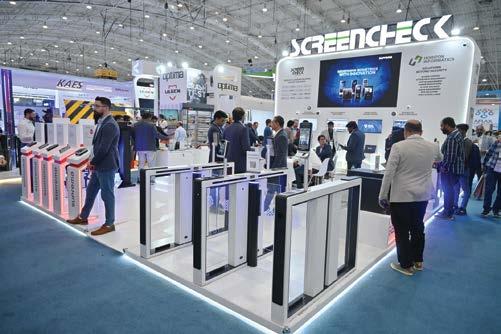
Any big project you take on in the region, you will find a footprint of ScreenCheck in it
As Digital ID evolves, it will play a crucial role in modern identification systems, offering scalable and secure solutions.
a&s Middle East: How does ScreenCheck ensure data security and privacy in its cloud-based solution, particularly for asset tracking and people visibility with RFID?
Mohamed: We ensure robust data security by implementing advanced encryption protocols, secure communication channels, and multi-factor authentication. Continuous monitoring and regular updates protect against threats, securing both asset and people visibility data. At Intersec Saudi, we will showcase a new range of controllers that adhere to the highest cybersecurity standards and comply with the requirements of the NIS2 EU Directive. These measures will significantly boost building security, ensuring privacy and preventing unauthorized access.
a&s Middle East: What are the main challenges you have encountered in adapting your products for various industries like education, healthcare, and government?
Mohamed: Adapting products for education, healthcare, and government involves addressing unique challenges such as privacy regulations, high-security data control, and dynamic needs. Our customized approach leverages deep industry knowledge to meet specific standards and ensure compliance, providing tailored solutions that enhance security and efficiency.
a&s Middle East: How does ScreenCheck stay ahead of technological advancements in the security and identification industry?
Mohamed: We stay ahead by forming strategic partnerships with leading global brands and integrating the latest technologies
into our solutions. Our extensive market coverage across 35+ countries keeps us informed about emerging trends. By continually updating our offerings, we ensure that our solutions remain at the forefront of the industry.
a&s Middle East: What role do you see mobile identification playing in the future, and how is ScreenCheck positioning itself in this space?
Mohamed: Mobile identification is set to become a key part of future security systems, offering enhanced convenience and flexibility. We were among the first to introduce mobile-based access control in the region. This technology simplifies access while maintaining high security through advanced encryption. As mobile identification evolves, it will increasingly offer a secure, efficient alternative to traditional methods. Today, we offer multiple models in mobile-based access control solutions, including 100% cloud and on-premise deployment.
a&s Middle East: What are your plans for expanding ScreenCheck’s market presence in the Middle East and beyond?
Mohamed: We are expanding by partnering with world-leading brands and introducing innovative solutions tailored for the Middle East and Africa. In simple terms, our strategy involves enhancing our market presence with new technologies and products that address security concerns in a fast-changing market. We have already established partnerships with more than 500 partners in the Middle East and Africa, and the plan is to add even more innovative brands and products to the portfolio. We are currently working on expanding into Southeast Asian countries, which is a promising market. n





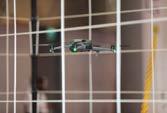

ANYTHING,
In a revealing exchange with a&s Middle East, Steve Simpson, Regional Sales Manager at Datapath, delves into the company’s four-decade journey in visual control technologies, highlighting their innovative solutions, advancements in AV-over-IP, and strategies for addressing the unique challenges and opportunities in the Middle Eastern market
n By: Orhan Hadzagic editorial@asmideast.com
a&s Middle East: Can you please present yourself to our readers?
Simpson: Steve Simpson, Regional Sales Manager, Datapath (Middle East). I have lived and worked in Dubai and the surrounding region for over 20 years.
a&s Middle East: Can you provide a brief overview of Datapath and its core business areas?
Simpson: Datapath is a world leader in control technologies for creative multidisplay video walls, small- to mediumscale video walls in enterprise collaboration environments, and command and control room video walls of any scale. Founded in 1982 and now distributing across five continents, Datapath has customers in more than 100 countries Worldwide: covering multiple industries
such as professional audio and video, military, education, security, and health care.
a&s Middle East: How does Datapath differentiate itself in the video wall, control room, and visual solution industry?
Simpson: Datapath has over 40 years of experience in delivering innovative video solutions to businesses across the globe. With our in-house R&D, design, manufacturing, and quality control teams, we provide the latest, innovative solutions to the marketplace. Datapath solutions are used in high-end applications around the world – from government offices to defense, utilities, and blue light organizations.
As
a&s Middle East: What are the key features of your Aetria control room solution, and how has it evolved since its launch?
Simpson: Over the past decade, Datapath has charted a new course towards AV-over-IP control technologies. This, in turn, has seen solutions designed for creative multi-display videowalls, smallto medium-scale videowalls in business environments, and Command and Control rooms of any scale – a prime market focus for Datapath and its latest Aetria solution. Today, operators can oversee numerous 4K monitors, adding up to a similar pixel density as a large wall. With such a personal videowall, the operator will be more engaged in the detail and
good as a control room is in design or the technology used it is the operators who define how efficient operations inside and outside the control room are in times of need

The size of the wall in today’s control rooms is just as important as the actual resolution
the clarity of information because they are interacting with that media. Due to viewing distance, walls tend to be HD in resolution and the operator workstations are often 4K. The size of the wall in today’s control rooms is just as important as the actual resolution, so the trend has taken us from cubes to LCD panels and onto direct view LEDs, which are essentially a large blank canvas of pixels allowing for bezel-free, flexible displays containing the most essential sources. Data volumes are huge and need to be managed effectively. With minimum latency, Datapath’s Aetria Workstation provides a unique ‘bespoke video wall’
ability to operators, allowing them to display whatever sources they need on their desktop display; however, they wish to see them. The benefits of such personalized displays are clear – operators can focus on their specific task with only their relevant information and can share any content on the larger video wall when necessary (user rights permitting, of course). The recent introduction of its Aligo TX100 4K KVM solution gives Datapath the capability to offer operators seamless control of their content. The demand for better quality is a perennial requirement, and new Datapath developments have allowed
4K sources to be delivered to walls and workstations without the challenges of major compression. 10G networking means that multiple HD sources can be sent across a single wire and 4K sources can be delivered where they need to be with extremely little latency. Systems are now able to provide not only the 4K feed but also encoded versions of it so that the pristine quality version can go to the control room and a slightly lower quality one can be presented elsewhere, such as a crisis room, where 1080p is quality enough. Another of Datapath’s latest product launches – Aetria Touch – allows operators to manage their Aetria environment from a 10.5” tablet for even easier, faster display management. Screen layouts can be easily saved, and accessed with a full selection of sources available at the touch of a tablet.
a&s Middle East: Can you elaborate on the capabilities introduced with the Aligo and Arqa AV-over-IP solutions?
Simpson: The adoption of Audio-Visual over IP (AVoIP) technology continues at a pace, playing a crucial role in ensuring seamless communication and efficient operations. AVoIP enables the transmission of high-quality audio and video signals over a network infrastructure, allowing for real-time monitoring, collaboration, and decision-making. AVoIP, with or without keyboard, video, and mouse (KVM) functionality, is replacing basic video matrix switching and at the same time enabling connectivity with remote workers and between control centers. How operators can view that data is also evolving, as more control rooms are opting for larger workstations with more data sources available for individual operators, to provide better situational awareness at an individual operator level. Meanwhile, larger video walls for the whole control center are being replaced with smaller video walls and/or individual large displays for sharing between smaller groups of operators. This is where Datapath’s Aligo and Arqa transmitters and receivers are integrated with Aetria to enable full AVoIP with KVM functionality. Anything, anywhere, with complete content control.
a&s Middle East: Can you provide more details about the security features of your VSN controllers?
Simpson: Of course. Security is a prime concern for any Datapath applications. We ensure that all point-to-point content is TLS-encrypted at both ends for maximum protection. This is the same level of encryption used by military organizations. Furthermore, with our latest VSN V3, the chassis has also been redesigned, optimizing airflow to improve heat management and reduce noise. This new design, along with a new platinum-rated redundant power supply, makes this the most efficient VSN to date. The new chassis also includes hotswappable fans, enabling uninterrupted 24/7 use and maintenance in the most critical installations.
a&s Middle East: Can you discuss the advancements in your video wall technology and its impact on control room operations?
Simpson: However, as good as a control room is – be it in design or the technology used – it is the operators who define how efficient operations inside and outside the control room are in times
of need. Providing these operators with instant information-sharing tools is critical in ensuring decisions and actions are made as soon as possible to eliminate risks to resources, security, and, potentially, life itself. How is Datapath addressing the scalability and futureproofing of traditional control rooms? From its inception, Datapath’s Aetria has been designed to be scalable to Control Rooms of any size. Not only can it be applied to operations from the smallest to the largest organizations, but it can also work in harmony with legacy hardware from other manufacturers – via an API port – allowing end users to upgrade in stages if required.
a&s Middle East: What role do artificial intelligence and IoT play in your current product offerings?
Simpson: The talk of AI surrounding audio-visual solutions is often over-exaggerated. Aetria allows automatic switching to certain display templates in pre-set situations, but this is down to software and programming. Artificial Intelligence
The talk of AI surrounding audio-visual solutions is often over-exaggerated
will, I’m sure, play a bigger part in operations in the future.
a&s Middle East: Can you discuss any partnerships or collaborations Datapath has formed to enhance the security aspects of your solutions?
Simpson: Datapath has formed several strategic alliances with key partners in the security space. Exhibiting worldwide, we partner with security console providers such as Fountainhead and Poly-M along with display manufacturers such as Absen and Planar. These alliances allow customers to see fully operational solutions at demo centers and how all components work in harmony. Furthermore, Datapath technology is also licensed to work alongside key security platforms such as Milestone and Genetec, with no ‘alt/tab’ between platforms required.
a&s Middle East: How do you stay updated with the latest security trends and integrate them into your products?
Simpson: We work very closely with our partners and end-users, from initial planning to full side-by-side commissioning service. These relationships allow us to receive feedback directly from the
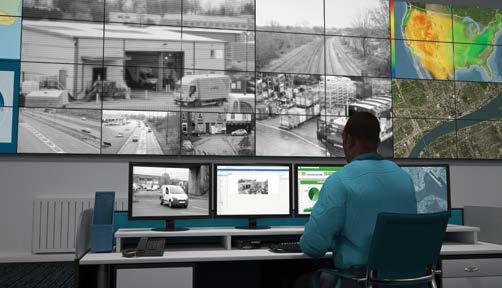

One of the main challenges is to get the market to understand that using 10G fiber signals to get visually lossless 4K60 with sub-millisecond zero latency is far superior to a compressed 1G copper signal
source. The concept of Aetria came from industry feedback and our R&D department is largely driven by what the market requires and what we can develop to meet those needs.
a&s Middle East: Can you describe the training and resources available for clients to ensure they maximize the security features of your products?
Simpson: The benefits of Aetria are plentiful and investment in training is a priority for users getting the most from our technology. Along with our online one-to-one training sessions, Datapath has demo suites and training centers all over the world. Offering AVIXA-approved courses, the latest of these has just been opened at the Mindstec Experience Center in Dubai. Here, visitors can see a fully operational ‘replicated’ Control Room and learn how Aetria works in various vertical markets – including defense, cyber security, utilities, and oil & gas.
a&s Middle East: How has the partnership with Mindstec enhanced your initiatives in Saudi Arabia and the rest of the region?
Simpson: Mindstec and Datapath have a long and trusted relationship that continues to thrive. They are our key partner for the Middle East and provide a valuable service in the region, not only in distribution, but for training support, client engagement, and marketing.
a&s Middle East: Can you highlight some key projects or partnerships Datapath has been involved in within the Middle East?
Simpson: We are not allowed to discuss most of the projects unless we have written permission, and the only one we have been given written permission Is Bahrain Sakir Circuit which is used for the F1 and other motor racing events, as is already published on our website.
However, we have many projects in all sectors including utilities, transportation, security (which includes Cyber and secure VIP locations), hospitality, retail, and events. We have many projects with Datapath’s Milestone integration plug-in and several already in the new mega site projects in Saudi Arabia.
a&s Middle East: What are the main challenges and opportunities you see in the Middle Eastern market for Datapath?
Simpson: One of the main challenges is to get the market to understand that using 10G fiber signals to get visually lossless 4K60 with sub-millisecond zero latency is far superior to a compressed 1G copper signal when competition promotes 1G for high-quality 4K60 also. Getting end users to switch to fiber especially if it’s an upgrade for them is then an extra cost, but the outcome (especially on a large video wall which is still very prominent in this region) is very noticeable when the image is enlarged more than on a normal desktop monitor where imperfections are not so noticeable. The opportunity is that we are one of the few that can offer an extremely high-quality video signal over 10G fiber with KVM ability and over long distances. As 10G is adopted more we will then have the most stable proven solution already installed in several projects in the region. n
Growing recognition of cybersecurity as a vital economic driver has pushed the sector’s expansion in the Kingdom beyond the usual confines of national security, making it foster innovation, encourage investment, and create job opportunities
n Mirza Bahic mirza.bahic@asmideast.com
The cybersecurity sector in Saudi Arabia is witnessing substantial growth. Now, that would be just an ordinary headline to make the stakeholders in the Kingdom’s national security business happy, but it’s only part of the story. A more curious development is that Saudi Arabia wants to apply its trademark golden touch to its security assets as well, and it’s cybersecurity’s turn this time.
According to the “Report on Key Economic Indicators in the Cybersecurity Sector 2024,” Saudi Arabia’s cybersecurity market is currently valued at 13.3 billion Saudi Riyals. In the rapidly changing economic landscape of the Gulf monarchy, this growth is driven by a diverse range of cybersecurity products, solutions, and services that cater to both the public and private sectors. The private sector, which includes entities managing critical national infrastructures, dominates the market, accounting for 69% of total spending. This significant investment highlights the importance of robust cybersecurity measures in safeguarding national interests and supporting economic stability. The report, developed in collaboration with the National Cybersecurity Authority (NCA), Boston Consulting Group (BCG), and the International Data Corporation (IDC), outlines a market segmented into three main categories: cybersecurity products, solutions, and services. Products and solutions make up the majority

The private sector, which includes entities managing critical national infrastructures, dominates the market, accounting for 69% of total spending
at 56% of the market, valued at 7.5 billion Saudi Riyals, while services account for the remaining 44%, valued at 5.8 billion Saudi Riyals.
The cybersecurity sector’s contribution to Saudi Arabia’s Gross Domestic Product (GDP) underscores its economic significance. In 2024, the sector’s total contribution is estimated at 15.6 billion Saudi Riyals, which represents 0.39% of the overall GDP and 0.81% of the non-oil GDP. This figure includes both direct contributions, amounting to 8.6 billion Saudi
Riyals, and indirect and induced contributions, which total 7 billion Saudi Riyals
Geographically, the demand for cybersecurity services in Saudi Arabia is highly concentrated in three regions: Riyadh, Makkah, and the Eastern Region. These areas account for 83% of the total demand, with Riyadh alone hosting 72% of the cybersecurity providers. This concentration is not just a reflection of the Kingdom’s economic hubs but also indicates the strategic importance of these regions in terms of cybersecurity needs and capabilities
The supply side mirrors this distribution, with the majority of cybersecurity providers also based in Riyadh. The report identifies a total of 353 registered cybersecurity
providers, categorized into large, medium, small, and micro entities. Notably, small providers constitute the majority at 77%, while large providers make up just 3%. This distribution suggests a dynamic market landscape with significant opportunities for small and medium enterprises (SMEs) to play a critical role in the sector
A diverse and growing workforce: the hidden advantage?
The cybersecurity workforce in Saudi Arabia is another critical component driving the sector’s growth. The report highlights that approximately 19.6 thousand specialists are currently employed in the sector, with women comprising 32% of the workforce. This level of gender diversity is notable and reflects broader national efforts to promote inclusivity and diversity across various sectors of the economy
The inclusion of women in the cybersecurity workforce is a strategic advantage for the Kingdom, helping to foster a more inclusive work environment and encouraging different perspectives in tackling cybersecurity challenges. The continued development of a skilled workforce is essential for sustaining the sector’s growth and enhancing Saudi Arabia’s overall cybersecurity posture.
Cybersecurity Market Size in the Kingdom
The centralizationdecentralization balancing act
To achieve all of this, Saudi Arabia’s approach to cybersecurity needs to be comprehensive, encompassing legislative, economic, and security dimensions. The
report highlights the Kingdom’s strategy of decentralizing operational responsibilities to national entities while centralizing governance and assessment at the national level. This model aims to enhance the Kingdom’s cybersecurity readiness, safeguard critical infrastructures, and promote resilience against cyber threats. The sector’s growth is further bolstered by strategic collaborations and investments in technology and innovation. The NCA’s role in stimulating the cybersecurity market, encouraging innovation, and supporting technology transfer is crucial for developing a robust cybersecurity ecosystem. These efforts are designed to attract both local and international investments, fostering a vibrant cybersecurity market that can respond to evolving threats and challenges
Despite the positive growth trajectory, the cybersecurity sector in Saudi Arabia faces several challenges. The concentration of demand and supply in specific regions could lead to disparities in access
The Kingdom’s strategy relies on
to cybersecurity services across the Kingdom. Additionally, the reliance on a few large entities for the majority of spending may pose risks if these entities face disruptions or changes in their cybersecurity strategies
However, these challenges also present opportunities. The growing awareness of cybersecurity’s importance at all levels of government and private sector entities is a positive sign. There is significant potential for expanding services to underrepresented regions and sectors, thereby enhancing the overall security posture of the Kingdom.
Moreover, the emphasis on developing a skilled and diverse workforce will continue to be a critical factor in sustaining the sector’s growth. As more women and young professionals enter the field, the cybersecurity sector in Saudi Arabia is likely to see innovative approaches and solutions that can address the complex and evolving landscape of cyber threats.
The cybersecurity sector in Saudi Arabia is at a pivotal point, characterized by robust growth, strategic importance, and significant economic impact. The insights from the “Report on Key Economic Indicators in the Cybersecurity Sector 2024” underscore the sector’s role as a cornerstone of Saudi Arabia’s economic and security frameworks. As the Kingdom continues to invest in cybersecurity, it will be crucial to maintain a balanced approach that fosters innovation, inclusivity, and resilience. With the right strategies in place, Saudi Arabia is now well-positioned to take the lead in the global cybersecurity arena, safeguarding its digital future while contributing to its broader economic goals. n
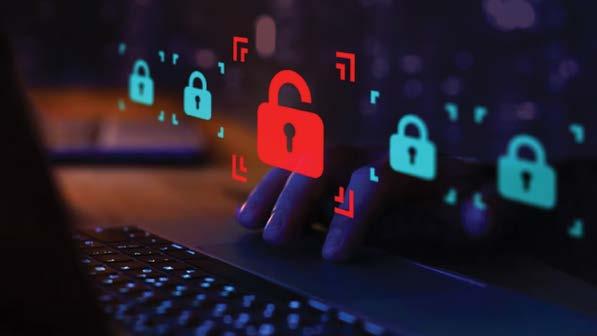
As the Middle East continues to grapple with the surge in data breach costs, the adoption of advanced cybersecurity measures becomes not just a necessity but a critical component of any sound business strategy
n Mirza Bahic mirza.bahic@asmideast.com
The Middle East is grappling with an unprecedented surge in data breach costs, just at the time when everyone thought that the region had become a safe haven of advanced cybersecurity. A call to alarm was sounded by IBM’s “Cost of a Data Breach Report 2024,” which showed that the average cost of a data breach in the Middle East escalated to USD 8.75 million in 2024, up from USD 8.07 million in the previous year. This figure positions the region as the second-highest globally, trailing only behind the United States in breach-related expenses. How did we get here, and are these figures really that much of a surprise?
This sharp increase reflects a broader global trend, with the worldwide average cost of a data breach rising by 10% to reach USD 4.88 million, marking the most significant jump since the COVID-19 pandemic. These escalating costs are attributed to a combination of factors, including lost business, operational down-
time, and expenses related to customer support and remediation efforts in the wake of breaches.
As businesses in the Middle East continue to expand their digital footprint, they face increasingly severe financial and reputational consequences from these breaches.
The report highlights that incidents involving stolen or compromised credentials are particularly challenging, with an average resolution time of 292 days. This extended period of vulnerability significantly contributes to the overall cost, as organizations struggle to restore normal operations and mitigate damage.
Speaking of damage, the presence of shadow data—information stored in unmanaged sources—further complicates the cybersecurity landscape, increasing breach costs by an average of 16%. This only serves to underscore the complexity of managing modern data environments and the need for comprehensive data governance strategies.
Industry-specific analysis reveals that sectors such as healthcare and finance in the Middle East experience some of the highest costs due to the sensitive nature
of their data and the critical importance of their operations. Globally, healthcare remains the most expensive industry for data breaches, with an average cost of USD 9.77 million, driven by the imperative to maintain patient trust and manage stringent compliance requirements.
The report also identifies that nearly half of all breaches involve customer personal data, including tax identification numbers, emails, phone numbers, and home addresses. The exposure of such sensitive information not only heightens the risk of identity theft and fraud but also significantly elevates breach costs due to the need for extended post-breach response measures.
To grasp the full scope of damage incurred by data breaches, organizations in the Middle East will have to take a closer look at less visible components of an average breach cost. Beneath the surface of immediately evident damage, these expenses encompass business disruption, regulatory fines, legal fees, and efforts to remediate and contain the breach. Business disruption costs are particularly high in the region, driven by the loss of customer trust and the need for extensive post-breach
The
average cost of a data breach in the Middle East escalated to USD 8.75 million in 2024
responses. These factors contribute to nearly 50% of the total cost of a breach, underscoring the profound impact of cyber incidents on businesses’ bottom lines.
The Middle East’s increasing reliance on emerging technologies such as artificial intelligence (AI) and the Internet of Things (IoT) has expanded the attack surface, making organizations more vulnerable to cyberattacks. This digital transformation, while necessary for maintaining competitive advantage, has created an environment where the cost and frequency of breaches are likely to increase further without adequate cybersecurity measures.
Bridging the Skill Gap: Is AI the First Aid?
One of the report’s key findings is the role of AI and automation in mitigating breach costs. Organizations that have extensively deployed these technologies in their cybersecurity infrastructure reported significantly lower breach costs. Businesses utilizing AI for threat detection and response saw a reduction in breach costs by an average of USD 1.88 million compared to those that did not use these technologies.
However, the Middle East appears to be lagging in adopting these advanced technologies, presenting an opportunity for organizations to invest in AI-driven cybersecurity tools to enhance their overall security posture. By leveraging AI and machine learning, companies can improve their ability to detect anomalies, predict potential threats, and automate incident response processes, significantly reducing the risk of a successful attack.
The cybersecurity skills shortage in the Middle East presents another significant challenge. More than half of the organizations surveyed reported a critical lack of skilled cybersecurity professionals, a factor that directly correlates with higher breach costs. This skills gap is exacerbated by the rapid digital transformation across the region, which has outpaced the development of local cybersecurity talent.
To address this challenge, regional governments and private sector leaders must invest in cybersecurity education and training programs. Fostering a culture of continuous learning within organizations
More than half of the organizations surveyed reported a critical lack of skilled cybersecurity professionals
can help ensure that existing IT staff are kept up-to-date with the latest cybersecurity trends and technologies. Partnerships with international cybersecurity firms and educational institutions can also play a crucial role in accelerating the development of local expertise.
To avoid this and many other traps identified in IBM’s report, regional organizations will have to rethink adopting a more proactive approach to cybersecurity without procrastination or unnecessary delays. Lagging only behind the USA in the list of data breach costs is surely a cause for alarm
for both the organizations and the regulatory body that will have to invest more in advanced technologies such as AI and machine learning for threat detection and response, while simultaneously addressing the cybersecurity skills shortage through targeted training programs, and ensuring compliance with regulatory requirements. In addition to these measures, companies should also focus on creating a cybersecurity culture that emphasizes the importance of vigilance, continuous improvement, and resilience against evolving threats. By embracing all of these, organizations can build a resilient cybersecurity framework capable of defending against current threats and anticipating future challenges. n
Thomas A. Knauel, Director of Bosch Product Management, hightlights Bosch’s leadership in innovation by incorporating multi-sensor detection, AI, and IoT into its fire safety solutions and delivering enhanced speed, precision, and reliability in line with the brand’s “Invented for Life” philosophy
n By: Orhan Hadzagic editorial@asmideast.com
Today’s customers typically expect digitally enabled products and services that they can access and operate at all times at home, at work, and on the go. Bosch is a technology-driven company in an increasingly connected world. The development of each new product embraces the latest innovations, including multi-sensor capabilities, artificial intelligence, deep learning, and the Internet of Things. And these smart technologies have been embedded within the innovative portfolio of Bosch Fire detectors, alarms, and related cutting-edge systems and services.
a&s Middle East: You are the head of Bosch Fire Product Management. Tell us more about yourself, when did you start working for Bosch Fire, what does your role include, where have you worked before and in what positions, and a bit about your education?
Knauel: I joined Bosch End of 2000 as a management trainee in the area of sales and marketing. Two years later I had the opportunity to join the building technologies division as a product manager for fire alarm systems. Did
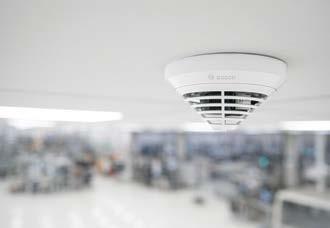
that for a few years and then moved with Bosch to Singapore for a regional sales management role. Returning to Germany I took on the leadership role for product management in Bosch for fire alarm systems. Today I’m responsible for Global Product management but also Strategy development for Bosch Fire. So, you can say I’ve been in the industry for 20-plus years. I quite like being exposed to different cultures and people. I am German but I have lived
in the US, UK, Singapore, and China –which I enjoyed a lot.
a&s Middle East: What are the company’s plans for international business development following the announcement of selling three major divisions?
Knauel: As you correctly point out, Bosch is realigning its Building Technologies division. The company plans to sell most of the division’s product business. This includes

the Video, Access and Intrusion, and Communication business units. But the product business with fire alarm systems will not be sold. In fact, our international fire detection business will continue with the same commitments and ambitions in all countries where we are present today. We will maintain our sales channels, partnerships, and contracts. Also, we will make further investments in our portfolio. So, we are excited to continue to contribute with our partners to the success story of the Bosch life safety business, which lasts already for over 100 years.
a&s Middle East: Does Bosch have some focus on specific industries as part of your strategy?
Knauel: Bosch offers an extensive range of products in the field of fire detection. These products allow us to realize tailormade solutions for almost any type of project, from manufacturing plants to commercial buildings, from hospitals to
airports. Now, our systems and products bring unique capabilities to overcome specific challenges faced by different industries. Let me share a few examples. In case of an alarm in hospitals, many patients require assistance for descending stairwells while elevators are out of use.
The Bosch Smart Safety Link enables the integration of voice alarms with fire detectors and assists safety managers with emergency evacuations allowing for a highly effective gradual evacuation approach. Next, unplanned downtime in manufacturing is extremely cost-intensive. Electrical machinery and electronic devices on industrial plants create electromagnetic disturbance values which risk disruption to production and other operations. The eSmog feature of AVENAR 4000 fire detectors is electromagnetic-compatible. The detector is therefore informed of disturbance values from sources such as equipment, which greatly reduces the risk of false alarms and subsequent downtime and evacuations. In hotels, museums or flagship office
buildings aesthetics play a major role. Our flat fire detectors are ultra-slim with a smooth surface, thereby being unintrusive and hardly visible on the ceiling. We even offer a choice of 16 RAL colors to complement interiors. And a last example today. Detecting fires in half-open spaces is difficult due to wind and weather effects. Our AI video-based fire detection solution, AVIOTEC, provides outdoor fire detection near buildings where virtually no other detection technology is available. It enables the detection of smoke and flames even in windy conditions. This is ideal for outside storage areas, hangars at airports, or solar plants.
a&s Middle East: Sensors using multi-criteria are already prevalent in the market for a while. Is complex data fusion of several sensors which thoroughly evaluates all combined phenomena before triggering any reactive output an intelligent innovation with huge potential for fire safety?
Knauel: Yes, it is. Bosch was one of the first companies to introduce true multicriteria detection to the market. The trend towards multi-sensor technology will continue as false alarms are still an issue in our industry. Reasons for false alarms are manifold. Some are more difficult to address from a manufacturer’s perspective than others. For instance, human error can be considered in the product design but not completely mitigated. However, false alarms stemming from environmental factors such as steam from cooking or showering, dust and dirt, or aerosols from processes in industry or laboratory environments can be solved using technology. The AVENAR detector 4000 series provides a superior level of fire detection. It allows optical and thermal sensors to be combined with sensors for chemical matter, such as carbon monoxide gas. This means monitoring for all of these phenomena can occur simultaneously. The captured detection data is then instantly analyzed against the data of real fire patterns. Genuine fire alerts are triggered rapidly while the level of robustness against nuisance alarms is impressively high: AVENAR 4000 detectors can, for instance, distinguish combustible CO gas from harmless steam and real smoke particles from regular dust particles using the so-called Dual Ray Technology. This is an outstanding benefit for safety managers.
a&s Middle East: How have AI and machine learning been affecting the fire safety industry? Please illustrate the answer with examples and trends.
Knauel: AI and machine learning are increasingly revolutionizing everything from production lines to healthcare diagnostics but also our daily lives. AI models with deep learning algorithms can be developed to recognize, categorize, characterize, and process input data, including imagery, speech, language, and behavior. In the fire domain, AI enhances fire prevention, detection, response, and risk assessment. These technologies are being integrated into various aspects of fire safety systems, from monitoring fire hazards in real time to automating emergency responses. Let me give you some examples. AI-powered fire detection systems use deep learning algorithms and computer vision to analyze video footage in real time. These systems can identify fire hazards and detect smoke or flames much faster and more accurately than traditional methods, reducing response times and thus limiting damage. Also, machine learning models can be used to predict potential fire risks by analyzing vast amounts of historical data, including environmental factors (such as weather, humidity, and vegetation) and human activity patterns. This data helps in assessing high-risk areas, which can be useful for resource allocation and proactive risk mitigation. Thirdly, AI can be used in the planning but also maintenance phases of a project or an existing installation increasing the efficiency and effectiveness

of the relevant activities. For instance, we are working on a System Planning Co-Pilot which will help planning engineers in their daily work.
a&s Middle East: Video-based fire detection technology has been in focus of Bosch Fire R&D for the last couple of years. What are its features and advantages compared to other fire alarm technologies?
Knauel: Bosch Fire has adopted this technology to recognize the behavior of real smoke and flames: AVIOTEC 8000i IR video-based fire detection uses smart functionality to reliably detect fires at their

source within seconds. The devices record live footage of an area with a 4-megapixel video camera inside a protective IP67 housing, which enables high-quality images in all environmental conditions. It analyzes this footage for any indication of a fire, based on hours of pre-stored footage of real flames and smoke. AVIOTEC supports business continuity as well as safety with deep learning algorithms which can be trained and adapted to recognize harmless phenomena and activities, such as cigarette smoking, which sets off false alarms in traditional detection systems. This technology makes AVIOTEC highly dependable. Furthermore, its dual-output relay helps safety managers differentiate between system troubleshooting requirements and fire alerts.
a&s Middle East: What kind of spaces has AVIOTEC been specifically designed for and can you give us an example?
Knauel: AVIOTEC has been specifically designed for environments where traditional fire detection systems may face some limitations. For example, in warehouses or aviation hangars, AVIOTEC is particularly useful because traditional smoke detectors may have delayed responses due to high ceilings, large open spaces, or ventilation systems that disperse smoke before it reaches the detectors. Industrial environments, especially those with machinery, flammable materials, or chemicals, benefit from AVIOTEC’s rapid fire detection, as it can detect fire or smoke visually without relying on heat or particles reaching a detector. And as mentioned before our Video-based fire detection system of-
fers a fire detection solution for outdoor areas for which other fire detection products simply can’t be applied to.
a&s Middle East: As in other parts of our lives, IoT is being integrated into fire safety systems as well. Have you managed to catch up with this trend and in what way?
Knauel: The Internet of Things (IoT) supports the use of smart devices, provides connectivity for smart homes, and accelerates and enhances productivity with instant data transfer and data-based decision-making. IoT is being continually integrated into our lives and work and, more recently, in specialized areas such as fire safety systems. IoT-enabled systems are, however, not new to the Bosch Fire portfolio. The groundbreaking Remote Services have already been available to system integrators and maintenance workers for several years. This solution allows them to conduct fire safety system health checks at a distance over tablets and smartphones, thanks to real-time connectivity and data feeds. This was already a huge leap forward in remote maintenance of fire alarms for advanced fire safety – and a huge timesaver with spared journey times of traveling to sites to check, for example, the remaining battery life of the equipment.
a&s Middle East: But, Bosch has not stopped there. You have also introduced Nexospace Fire System Explorer. Tell us more about it. What was the idea behind its development?
Knauel: A decade ago, we pioneered remote services by connecting fire alarm systems to the IoT. Well, now, with NEXOSPACE, we are taking it a big step further. The Bosch Building Technologies digital suite, NEXOSPACE, has now been adapted to include data capture, management, and analysis of all Bosch Fire Alarm Systems with the NEXOSPACE Fire System Explorer (FSE). Interconnectivity of FSE with all fire safety equipment and devices empowers system integrators with full transparency of an entire fire safety system. This increases efficiency for integration, maintenance, and upgrades and reduces false alarms even further thanks to rapid remote troubleshooting and fewer operational interruptions. System integrators managing fire safety for multiple sites or buildings in distant, hard-to-reach locations or ex-

tremely dusty or humid environments will be relieved of the cumbersome effort of frequent up-close system health checks. Similarly, those responsible for sites with high fire loads can stay continually vigilant and up-to-date over the clear interface of the Bosch FSE. The smart, fully IoT-ready functionality and intuitive user experience of FSE will win over customers from all industries who are interested in investing in a fire safety system at the competitive edge.
a&s Middle East: What large projects has Bosch Fire been involved with recently and what is the customers’ feedback?
Knauel: Bosch Fire Alarm Systems have been successfully implemented in numerous high-profile projects globally, showcasing their adaptability and reliability in diverse environments. Our systems are installed in Germany’s largest airports Frankfurt and Munich but also internationally. One notable example here is the Mactan-Cebu International Airport in the Philippines. This rapidly growing hub required a scalable and modular fire detection system to ensure the safety of millions of passengers annually. Bosch’s solution provided comprehensive fire protection, integrating advanced smoke detection technology to offer rapid response and clear, timely alerts throughout the facility.

Onur Sönmez, Bosch’s Head of Sales and Marketing for Fire Systems in Türkiye, Middle East, and Africa, highlights the growing demand for innovative fire safety technologies in the region and Bosch’s strategy to educate the market while maintaining strong local partnerships.
a&s Middle East: Do you find that the Middle East is mature for the latest fire technologies we have been discussing with your Product Manager? Are you receiving customer inquiries about these types of technologies and how do you communicate its benefits to the market?
Sönmez: From my experience, the traditional approach to Fire Alarm Systems is still dominating the market, but we also start to observe that demand for more innovative solutions is a growing trend. Businesses and organizations become more aware of the critical role fire safety plays in ensuring operational continuity and protecting assets. In fact, we are increasingly receiving inquiries from customers who are interested in the types of technologies we’ve been discussing, such as AI-based fire detection, IoT-enabled systems, and video-based solutions like AVIOTEC. To communicate the benefits of these technologies, we focus on educating the market and performing POC tests about how these solutions not only enhance safety but also provide longterm value through reduced false alarms, quicker response times, and integration with existing smart building systems. The market in the Middle East may still be in the early stages of adopting these future-proof solutions, but I believe we will see a much broader shift toward these advanced fire safety technologies in the near future.
to our Middle East customers. Our fire detection operations will keep all current sales channels, partnerships, contracts, and sales local teams intact. This ensures that our Middle East customers will continue to benefit from Bosch’s renowned expertise and innovation in life safety.

a&s Middle East: What is the strategy for the Middle East region for fire detection in the next few years?
a&s Middle East: How will the sales of other divisions affect Bosch customers in our region?
Sönmez: The upcoming sale of Bosch’s Video, Access and Intrusion, and Communication divisions will not affect our fire alarm systems business in the Middle East region. We remain steadfast in our commitment to fire detection solutions and will continue to deliver the same exceptional service and support
Another project, now from the Adria region, is Continental’s tire manufacturing facility in Timisoara. Like many industrial environments, it faced significant fire safety challenges due to the presence of flammable materials and complex production machinery. Bosch Security addressed these challenges by installing AVENAR panels 8000 along with AVENAR 4000 detectors. Bosch’s tailored approach not
Sönmez: The market serves a diverse range of verticals, including commercial and residential real estate, oil and gas, hospitality, manufacturing, healthcare, and transportation. Each of these sectors demands customized fire protection solutions to address specific needs and comply with local regulations. With construction projects on the rise, the demand for advanced fire systems that seamlessly integrate with building automation and monitoring technologies is also growing. As a global fire alarm system manufacturer, our focus is on building strong relationships with key stakeholders, including architects, consultants, contractors, and facility managers. Providing comprehensive solutions that not only meet regulatory requirements but also enhance overall safety and operational efficiency sets us apart in the market. Given the varied regulations and market dynamics in each country across the region, our primary strategy is localization. To achieve this, we work with local system integrators (SIs) who are wellequipped to meet the specific needs of their markets. Together with my team, we actively support these local SIs, offering commercial training and organizing events to promote Bosch Fire Alarm’s unique selling points. In addition to these efforts, we implement a wide range of sales and marketing campaigns, both locally and globally. This includes product information webinars, sessions on fire alarm system solutions tailored to key verticals, as well as online commercial and technical training. We also conduct sales campaigns targeting specific product groups. Furthermore, we participate in major local events and exhibitions to showcase our key products and engage directly with stakeholders and decisionmakers on various projects.
only met but exceeded Continental’s stringent safety requirements.
a&s Middle East: Having all these innovations in mind, what technologies and solutions can we expect from Bosch Fire in the recent future?
Knauel: At Bosch, we are committed to pushing the boundaries of technology.
That’s in our DNA. In the fire safety space, we will continue and expand to integrate AI, IoT, and predictive analytics into our portfolio, providing future-proof solutions that deliver greater precision, faster response times, and improved reliability. Allow me to keep this a little vague but let me say this: Customers can expect continuous innovation that enhances both safety and business continuity across all sectors. n



In an interview with a&s Middle East, Eng Badar Al Salehi, Head of Oman National CERT and the ITU-Arab Regional Cybersecurity Center, discusses the significance of cybersecurity in the Middle East’s digital economy, global collaborations, and the objectives of aligning cybersecurity with Oman’s Vision 2040.
n By: Mirza Bahic mirza.bahic@asmideast.com
a&s Middle East: What are the key objectives of this year’s 12th Regional Cybersecurity Week, and how do they reflect the growing importance of cybersecurity in the Middle East’s digital economy?
Al Salehi: The 12th Regional Cybersecurity Week is one of the key strategic Annual initiatives of the ITU-Arab Regional Cybersecurity Center (ITU-ARCC) in Oman that was established in 2013 where the Week comes under the capacity building pillar of the Center. This year’s theme centers on “Cybersecurity as an Enabler for the Digital Economy,” emphasizing key strategies to advance the field. One of the primary focuses is on enhancing cyber resilience, with discussions on how businesses can bolster their defenses against ever-evolving cyber threats as the digital economy expands. We will also discuss the ways of fostering economic growth and the role of cybersecurity in attracting foreign investment and maintaining consumer trust, especially as e-commerce and digital services grow. There is also an emphasis on policy development, as participants collaborate on crafting regulations that support economic growth while en-
suring data privacy. Furthermore, we will tackle capacity-building initiatives aimed at investing in training and human development programs to upskill the workforce, ensuring that local talent meets the demands of a digital economy.
a&s Middle East: How does the 12th Regional Cybersecurity Week facilitate collaboration between regional and international cybersecurity experts?
Al Salehi: A reference to the continued successes achieved by the Regional Cybersecurity Week that was widely praised by local and international participants. Given the importance of the topics addressed in the conference, in addition to the participation of a group of international experts and speakers as well as international cybersecurity companies and organizations that participated in the accompanying exhibition and presented a range of cybersecurity solutions and technologies, such continued success of the Cybersecurity Week resulted in being awarded five world Guinness record awards in the 2023 edition, breaking records for the largest global gathering attended by over 1600 participants from more than 70 countries around the world, including Arab and Islamic countries, African nations, and East Europe as well as central Asia which made the regional
Cybersecurity Week to be the largest cross-regional cybersecurity event. The 12th Regional Cybersecurity Week will feature an array of activities, including panel discussions and workshops. These sessions will bring together regional and international experts to exchange best practices and case studies, fostering knowledge sharing. Networking opportunities will be abundant, allowing participants to form partnerships that can lead to joint cybersecurity initiatives. Projects and initiatives, such as collaborative research or pilot programs, will be launched to address complex cybersecurity challenges. Additionally, the event will provide a platform for signing memorandums of understanding (MoUs) and forming collaborations between cybersecurity agencies and the private sector.
a&s Middle East: Can you elaborate on Oman’s role as a regional hub for cybersecurity industry development and Innovation?
Al Salehi: The Sultanate of Oman has listed cybersecurity as one of the key priorities from an economic perspective in Oman’s Vision 2040 and has established cybersecurity industry development and innovation program “Hadatha program” in November 2022 with a vision of “specialized cybersecurity indus-
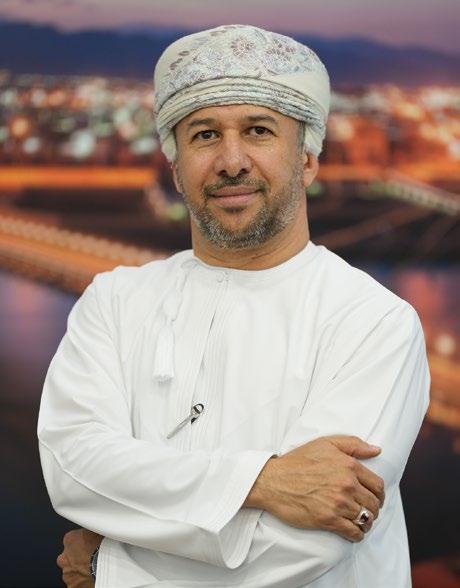
The 12th Regional Cybersecurity Week will feature an array of activities, including panel discussions and workshops. These sessions will bring together regional and international experts to exchange best practices and case studies, fostering knowledge sharing
try promoting economic growth and diversification “by establishing specialized cybersecurity industry in the region focusing on human capitals and driven by Innovation, creativity, and excellence. The objectives of the program include aligning with Oman’s Vision 2040, particularly in addressing cybersecurity challenges. Efforts will be directed towards developing a national cyberse -
curity ecosystem, fostering the growth of specialized cybersecurity capabilities within the country, and creating a thriving environment for SMEs and startups to address domestic needs and challenges. Local companies will also be encouraged to expand internationally, promoting Oman’s cybersecurity innovation on the global stage. Key initiatives include supporting research and develop -
ment (R&D) in cybersecurity, establishing partnerships with private sectors, academia, and government entities, as well as collaborating with international partners. Special incentives will be introduced to attract foreign investment, further strengthening Oman’s position in the global cybersecurity landscape. Through the ITU-Arab Regional Cybersecurity Center (ITU-ARCC), Oman is leading a number of cybersecurity industry development initiatives and projects in collaboration with global cybersecurity firms as well as helping to build a skilled workforce in the region.
a&s Middle East: How does setting five Guinness World Records for the Arab Regional Cybersecurity Centre in 2023 influence the goals of this year’s event?
Al Salehi: Such recognition for the 2023 version of Cybersecurity Week resulted from our strategic regional and international collaboration and partnership with regional and international organizations where the Cybersecurity Council of the UAE has kindly hosted the event in Abu Dhabi and the valuable participation and cooperation of ITU, OIC-CERT, FIRST, Arab league, etc. had significant importance and contribution to such success and recognition. This will influence this year’s event by giving it global recognition, enhancing the visibility of the Arab Regional Cybersecurity Week, and highlighting its dedication to excellence and innovation in the field. Setting new records will energize participation and draw attention to the critical role cybersecurity plays in economic growth. These achievements will also serve as a benchmark for future goals, fostering continuous innovation in cybersecurity practices.
a&s Middle East: How does the 12 th Regional Cybersecurity Week address cybersecurity challenges unique to the Middle East?
Al Salehi: The 12th Regional Cybersecurity Week addresses how regional conflicts/interests create unique cyber threats/ opportunities emphasizing collaborative strategies through the Cybersecurity Diplomacy Initiative led by Oman to the region.
Following the cybersecurity conference in collaboration with ITU, FIRST, and

OIC-CERT, there will be a two-day comprehensive cybersecurity simulation of real-life attacks on critical national infrastructure that cause millions of dollars of losses. The scenarios will highlight the attack trends that any country can be a potential target of. The scenarios will lead to lessons on culturally relevant cybersecurity practices that respect local norms while enhancing security protocols and highlighting the need for tailored solutions to combat specific threats prevalent in the region.
a&s Middle East: What initiatives, such as the 1st GCC cybersecurity Hackathon contribute to advancing regional cybersecurity?
Al Salehi: The 1st GCC Cybersecurity Hackathon is the 1st in the Industry Development platform that brings together innovators from the GCC countries in one place to convert their ideas into realistic models for products or solutions for the common cybersecurity challenges faced by the GCC countries, which will contribute to the development of
Following the cybersecurity conference in collaboration with ITU, FIRST, and OICCERT, there will be a two-day comprehensive cybersecurity simulation of real-life attacks on critical national infrastructure that cause millions of dollars of losses
the cybersecurity industry in the GCC and Internationally.
Such hackathons and initiatives will promote a culture of cybersecurity innovation throughout the GCC and surrounding regions. They will address challenges faced by the public and private sectors, working to develop solutions that address these issues. Furthermore, the initiatives will support cybersecurity startups, freelancers, and entrepreneurs, fostering the development of specialized local products and solutions across the GCC and beyond. Furthermore, as we will explore the advancements in cybersecurity threats and the importance of staying ahead of
the curve to protect our digital infrastructure; It is imperative that we adapt and strengthen our defenses to combat the growing sophistication of cyber threats. In conclusion, Cybersecurity is crucial indeed but we should always see the white side of it as an opportunity too. We would like to thank our partners, and stakeholders for joining us on this journey towards a more secure cyberspace. We believe in the power of partnership and together, we can navigate the complexities of the cybersecurity landscape and build a resilient defense against cyber threats while capturing potential social and economic opportunities. n

Anne Frayssinet, Milipol Network Director, shares her thoughts on the challenges and opportunities shaping the industry, highlighting how the Milipol shows play a key role in presenting the latest security innovations, fostering global collaboration, and paving the way for the future of homeland security in the Middle East and beyond
n By: Orhan Hadzagic editorial@asmideast.com
Under the high patronage of His Highness Sheikh Tamim bin Hamad Al-Thani, Amir of the State of Qatar, the 15th edition of Milipol Qatar, the Global Event for Homeland Security and Safety, will be held under the theme “The technology in the service of security” from October 29-31, 2024, at the Doha Exhibition and Convention Centre (DECC). Anne Frayssinet, Milipol Network Director, discusses the critical topics of innovation, global collaboration, and the evolving security landscape, as Milipol Qatar 2024 approaches.
Can you elaborate on the key factors behind Milipol’s enduring success and global recognition in the security sector?
Frayssinet: Milipol Paris is a premier event that gathers the entire internal security ecosystem, including buyers and solution providers. It serves as a hub where companies and exhibitors engage with market realities, discuss developments, and anticipate future trends. The global homeland security market is witnessing significant growth driven by increasing security challenges such as terrorism, cyber threats, and natural
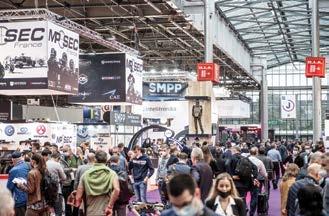
Advanced technologies and government initiatives are propelling the market towards substantial expansion
disasters. Advanced technologies and government initiatives are propelling the market towards substantial expansion. As technology evolves rapidly, information and communication systems become more interconnected and complex, necessitating state-of-the-art solutions to
prevent system failures and malicious acts. Milipol Paris showcases the latest innovations that address current and future threats effectively. Additionally, we have expanded Milipol events globally, including Qatar in 1996, Singapore in 2015, and New Delhi in
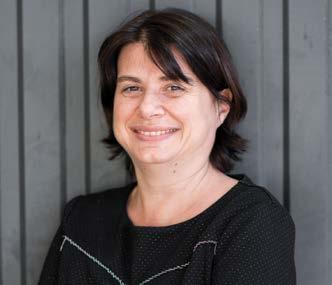
The event, themed “Powering Innovation: A Safe & Secure Future,” is Asia Pacific’s flagship homeland security gathering both public and private sector security
October 2023, allowing companies to enhance their global market positions alongside leading contractors. The Milipol Network, with its numerous exhibitors, speakers, conference cycles, and workshops, offers comprehensive solutions to combat various forms of crime.
The recent Milipol Asia-Pacific was a significant event. What were some of the highlights and key takeaways from this year’s edition?
Frayssinet: This year’s major highlight was the collaboration between Milipol Asia-Pacific and HTX’s TechX Summit, showcasing the central role of science and technology in enhancing public safety and national security in the Asia Pacific. The trade exhibition featured the latest homeland security innovations, while the TechX Summit hosted high-level conferences with prominent government officials, industry leaders, and academia.
Singapore’s Minister for Home Affairs and Law, Mr. Kasiviswanathan Shanmu-
gam, and France’s Minister of the Interior, Mr. Gérald Darmanin, were notable attendees.
The event, themed “Powering Innovation: A Safe & Secure Future,” is Asia Pacific’s flagship homeland security gathering both public and private sector security. Significant growth has been observed in homeland security technology, particularly in AI surveillance, airport infrastructure security, and cybersecurity. Milipol AsiaPacific’s presence expanded by 30% this year, featuring 305 exhibitors from 31 countries across a 14,500 sqm exhibition space.
Notable global companies such as AREA S.p.A, ClearTrail Technologies, ESRI, Hikvision Technology, Innovatrix, Idemia, Microsoft, NUIX, Swissdrones, Thales Solution Asia, VMI Security, and WEY Singapore Technology participated, along with country pavilions from China, Italy, France, Germany, Hungary, Singapore, and the USA. The HTX Pavilion highlighted innovations from HTX and key industry partners, including ST Engineering,
CISCO, DXC Technology, and Samsung. Looking ahead to Milipol Qatar, what are some of the key preparations and priorities your team is focusing on?
Frayssinet: Our current focus includes organizing international pavilions, the conference program, the opening ceremony, the gala dinner for sponsors and exhibitors, and sending invitations to official delegations. We are also addressing all exhibitor inquiries to ensure their preparations for the show are seamless. Additionally, visitor registration is now open, allowing attendees to obtain their passes online.
What emerging trends and critical topics in security do you plan to highlight at Milipol Qatar?
Frayssinet: Milipol Qatar attracts the leading global public and industrial security players who showcase the latest security, safety, detection, and prevention equipment, systems, and services. The event aligns with Qatar’s National Vision 2030, addressing the country’s growing security needs. The 15th edition of the show, scheduled for October 29-31, 2024, at the Doha Exhibition and Convention Centre, will build on the success of its previous edition, which featured 222 exhibitors from 22 countries, 11,500 visitors from 84 countries, 389 official delegates, and secured contracts worth 592 million QAR. The event seminars attracted over 500 attendees.
As head of Milipol events and the Milipol Network, what is your vision for the future of these events? How do you see them evolving in the next five to ten years?
Frayssinet: In an increasingly uncertain environment, protecting people and infrastructures requires constantly updated resources and solutions. Milipol events enable global security professionals, from both public and private sectors, to find the most suitable equipment and technologies for their needs by bringing together solution providers, manufacturers, and distributors. These events offer several advantages, including economic support for the security industry, strengthened bilateral cooperation between ministries of interior, and a unique platform for promoting exports from the security sector. I am confident that the Milipol Network will continue to be the world’s leading network of events dedicated to safety and homeland security, fostering innovation and collaboration in the industry. n
SUPREMA
Suprema unveils BioEntry W3 AI facial authentication device that combines top-tier security with stringent data privacy measures, designed for highsecurity environments and diverse applications
n Source: Suprema editorial@asmideast.com
Suprema, a global leader of AIbased security solutions, has announced the launch of BioEntry W3, an AI-powered facial authentication device designed for high-security environments.
The BioEntry W3 is designed with data privacy as a top priority, addressing concerns through its display-free design and highly secure ‘Template on Mobile’ (ToM) authentication method. The display-free design prevents facial images from being shown on a screen, instead communicating the authentication result through LED indicators and text. This ensures that facial authentication data remains protected from nearby unauthorized individuals in public spaces. Suprema’s ToM method allows users to store and manage their facial images on their personal mobile devices, meaning facial data is never stored in the security system itself. This empowers users with complete control over their biometric
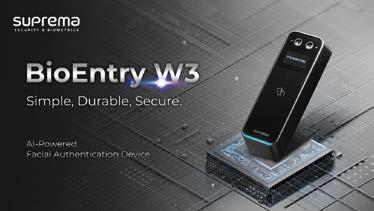
Suprema’s ToM method allows users to store and manage their facial images on their personal mobile devices, meaning facial data is never stored in the security system itself
data while maintaining security integrity. Equipped with a Secure Element (SE) chip, the BioEntry W3 encrypts all data, and stores encrypted data and
cryptographic keys in an isolated environment, ensuring that even in the event of a data breach, decryption is impossible. Also, BioEntry W3 is
compliant with major regulations and certifications, including the NIS2 Directive, GDPR, ISO/IEC 27001, and ISO/ IEC 27701, highlighting Suprema’s dedication to data security and privacy management.
Despite its simple mullion-type design, the BioEntry W3 offers exceptional facial authentication performance and durability, making it ideal for both indoor and outdoor environments. Its deep learning-optimized Neural Processing Unit (NPU) allows for fast and accurate facial authentication at the edge, face matching in just 0.2 seconds. By processing authentication data in real time at the edge, the device eliminates reliance on network connectivity and reduces latency, making it highly effective in high-traffic environments where security and efficiency are paramount.
The slim design and high durability make the device easy to install in any location, optimized for outdoor environments. Its IK08 impact resistance ensures that the device can withstand physical impacts, enhancing its reliability and security in various outdoor conditions. With IP67 water and dust resistance, the device is built to endure extreme weather and environmental conditions, including deserts, ensuring minimal damage and longlasting performance.
“BioEntry W3 is a future-proof solution that represents a significant leap forward in facial authentication technology,” said Hanchul Kim, CEO of Suprema Inc. “It is designed to meet the evolving demands of both security and privacy. By combining advanced AI and edge processing with a privacy-centric design, we’ve developed a solution that delivers top-tier security while enhancing the user experience. Addi-
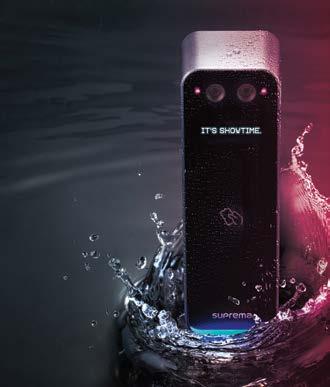
BioEntry W3 is a future-proof solution that represents a significant leap forward in facial authentication technology
tionally, its robust durability and scalability ensure that the BioEntry W3 can adapt to diverse environments, effectively meeting the varied needs of customers.”
The 6th edition of Intersec Saudi Arabia will be held in association with the Ministry of Interior and Saudi Civil Defence from October 1-3, 2024, at the Riyadh International Convention Centre.
Suprema’s innovative product line-up, including the newly released BioEntry W3, will be showcased. We invite you to visit our partners’ booths at Intersec KSA 2024 to experience the latest in security technology. The two booths are located at Hall 5, Booth D-24 with ALKURDI Trading and Contracting Company, and Hall 1, Stand E-24 with Horizon Informatics. n
CYBERSECURITY
The sharp increase in cyberattacks in 2024, fueled by outdated legacy systems, highlights the urgent need for businesses to upgrade their security measures to avoid severe financial, data, and reputational losses
n By: Mirza Bahić mirza.bahic@asmideast.com
Not a month goes by without news of a cyberattack making the headlines. Already in 2024, there have been over 9,000 publicly disclosed global security incidents resulting in an estimated 35 billion breached records, significantly up from the estimated 8 billion breached records in 2023 (IT Governance, 2024). Although the type of attack may vary, there’s one commonality among the statistics: most are a result of legacy hardware and software.
A legacy is often fondly described as the long-lasting impact made by a person or event. In the security industry however, legacy refers to software or hardware that has been superseded, and often its continued presence becomes more hindrance than help, with the use of legacy solutions now considered an enabler in the increased likelihood of cyber-attacks.

These startling numbers paint a clear picture that upgrading security hardware and software is of critical importance for businesses around the world. The battleground of commerce and communication has shifted from the physical world to the digital world, and as technology advances, so do the methods employed by cybercriminals. In this shifting landscape, security systems are the frontline of de-
fenses, making it imperative for businesses to maintain their cyber health in the relentless pursuit of security.
As cyber and physical security continues to evolve, legacy software and hardware pose a serious threat to business ef-

ficiency, reputation, and competitive advantage. Organizations must ensure they are taking the necessary steps to fortify and best protect themselves against current and emerging cyber threats, with a focus on proactive rather than reactive cybersecurity hygiene measures.
It requires a double-pronged approach, a critical shift in mindset regarding the prevalence and severity of a potential cyber-attack, and a pronounced focus of system upgrades to best protect against current and emerging threats.
Assumptions that cyber-attacks are solely targeted at large scale enterprises are no longer valid, with attacks becoming more prevalent, sophisticated, and without discrimination, targeting individuals, small businesses, and complex organizations. This acknowledgement of vulnerability needs to be accompanied by a greater understanding of the importance of regular security upgrades and the crucial part they play in bolstering protection against threats.
Customers should consider that their physical access control system is no different to any of their other business or enterprise systems. In other words, they deploy updates to their IT servers and desktop machines regularly, so their physical security should be no different. In January 2024 there were nearly 30 billion records breached in 4,648 publicly
disclosed security incidents - to put this in context, in December 2023 there were 2.3 billion records breached in 1,352 security incidents, demonstrating a massive uptick in cyber-attacks (Ford, 2024).
Software updates are the unsung heroes when it comes to online safety. Yes, they patch annoying bugs and add shiny new features, but their true strength lies in bolstering your digital defenses against ever-evolving threats.
Software updates may be the single best way to protect businesses from cyberattacks. It’s a proactive security measure that reduces the risks for companies to be exposed to cyber-attacks in which cybercriminals target their sensitive data. Responsible software companies have dedicated security teams constantly analyzing attack trends and proactively patching software against potential vulnerabilities. The consequences of leaving legacy hardware and software in place can be catastrophic, ranging from financial losses and data theft to lasting damage to an organization’s reputation. Legacy systems become more vulnerable to attack with each passing day because they lack robust cybersecurity measures to combat modern and escalating threats, often hosting
vulnerabilities that hackers readily exploit. And as regulatory bodies and governments worldwide tighten their grip on data protection and privacy, failure to meet these evolving standards can result in significant legal consequences, including hefty fines.
Threats like these inform our cybersecurity efforts here at Gallagher. We hold our products to a higher standard by subjecting them to some of the most rigorous testing in the industry, employing a combination of in-house and third-party penetration testing and collaborating with everyone from standards accrediting bodies to hobbyist hackers to fortify our solutions against the threats of the future. As a result, our solutions meet the cybersecurity needs of both commercial entities and those operating in high security, like government bodies, militaries, and critical infrastructure sites.
Gallagher’s award-winning site management platform, Command Centre, was the first system to offer alarm, access, and perimeter security in one single product, and offer continual enhancements by way of two major releases each year to ensure customers remain at the forefront of innovation.
Upgrading security hardware and software is not merely a matter of keeping up; it’s about staying ahead of the curve. Today’s cybersecurity defense technologies provide proactive measures to significantly enhance a business’s ability to defend itself – and its reputation – against increasingly sophisticated attacks. The defenses supplied by upgraded systems are no longer an option – they’re a necessity and strategic imperative. Cyber threats will continue to evolve and adapt. It’s up to businesses to invest in the protection of their future.
Gallagher will be showcasing their innovative, award-winning suite of security technology at Intersec Saudi Arabia at the Riyadh International Convention & Exhibition Centre from October 1-3. Visit the team at stand #2-D24. For more information visit security.gallagher.com n
HID GLOBAL
Mobile access control and sustainable cards provide future-proof flexibility for the never-ending endeavors of digital transformation and going green.
n By: Sam Cherif, Senior Director, Regional Business Head, MEA editorial@asmideast.com
Middle East leaders, from policymakers to startup founders, justifiably fret over security. And while we value the integrity of our data – our intellectual property, customer information, and so on – we must also think about our physical security. Many regional organizations are looking, with a fresh eye, at how to manage access to premises and hard assets and are even merging physical and IT access as part of green initiatives.
To capture a snapshot of physical security HID recently published its State of Physical Access Trend Report after interviewing more than 1,200 enterprise decision-makers from around the world. The study identified five main trends in physical security. One of them is the rising ubiquity of mobile access and digital IDs. To be clear, physical ID cards are still prevalent within the access-control industry, but we see mobile access credentials and digital IDs gaining ground rapidly.
The report revealed that almost two in five (39%) organizations have adopted a mobile-identity solution. Almost half (48%) of the respondents mentioned contact-

less solutions and 44% cited mobile access. These two approaches emerged as the most popular across the access control arena. Arguably, we could say that a revolution is afoot within physical security, likely driven by the continuous arrival of more digital natives in workforces.
The benefits of such a trend are there for all to see. First, because it has jet-
tisoned physical cards, the adopting enterprise will have drastically reduced its use of plastic, thereby enhancing its sustainability credentials. When mobileaccess solutions integrate digital wallets, the convenience for employees cannot be overstated. Additionally, if a mobile device is lost, it is easier to suspend any credentials they carry and also easier to locate the device, return it to its owner, and reinstate the credentials. And, given our brush with COVID, contactless solutions are better for health and safety.
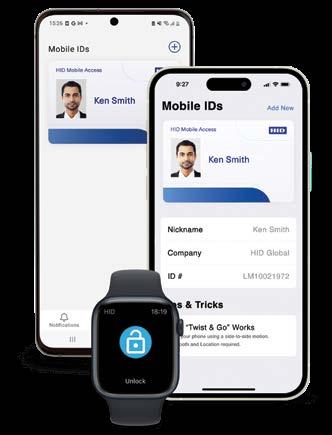
One estimate from Omdia claims nearly 50 million mobile credentials were downloaded around the globe in 2022. Omdia goes on to predict that the mobile credentials market will expand at a 39.8% CAGR in the five years between 2022 and 2027. HID’s 2024 State of Security and Identity Report showed that security professionals believe almost 80% of organizations worldwide will deploy mobile IDs within the next five years, and industry partners predict this number will be 94%.
This enthusiasm may lie in the fact that investments in mobile identity and contactless systems come not only with the direct benefits mentioned previously, but also with spillover advantages in IT. The employee experience is greatly improved when the same method used to enter the
building can be applied to network authentication. Smartphone and smart watch users can log on to PCs and print documents with the same level of auditability as that associated with physical cards. The industrial applications are just as broad in scope – student ID cards, hotel room keys, and so on.
Moreover, the integration of mobile access with digital wallets enhances both convenience and security. Employees can use their credentials stored in the digital wallets from their smartphones or wearables to access facilities, eliminating the need for physical cards and aligning with digital-first workplace strategies. This shift also supports sustainability by reducing plastic waste. With advanced encryption and the ability to remotely suspend credentials if a device is lost, digital wallets offer a secure and eco-friendly alternative to traditional access methods.
No matter the use case, credentials are never shared or stored on Apple or Google servers, which is a source of significant assurance to end users everywhere. And when end users are happy with a trend, invariably that trend is here to stay. n

UNV is set to release the OwlView series cameras, featuring Wise-ISP technology and expected to dominate the market
n Source: Uniview globalsupport@uniview.com
It all started in 2008 with Nightview 1.0. Back then, infrared compensation technology was used, based on which infrared light would turn on automatically with night vision. In 2013, the Nightview 2.0 era started with Starlight technology. Sensor technology upgrade included the BSI backlighting as a result of which sensitivity increased by 20-40%. Color images at night in low light performed better.
2015 saw the introduction of Nightview 3 with Super Starlight technology. The upgrades included bringing the sensor size to 1/1.8” and the lens to F1.2. This enhanced the color effect of night images by increasing the amount of incoming light under certain low illumination conditions. In 2018, Nightview 4.0 was launched with the implementation of full-color technology. White light (warm light) was applied to get color images throughout the night. Sensor and lens technology was also optimized.
In 2024, UNV is going to release products from the Owlview Series as part of the new NightView 5.0 era. When the 1/1.8” sensor and F1.0 aperture reach the hardware limits, UNV applies Wise-ISP technology. In very low light (0.0003Lux), colorful
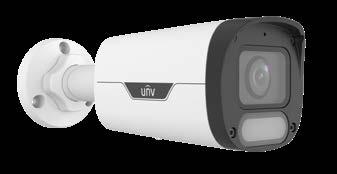
video can be achieved without turning on the LED.
In terms of technology, UNV released a large industry-grade model Wutong in 2023. This is the UNV AIOT (Artificial Intelligence & Internet of Things) patented industry model. Wutong Model integrates computer vision and natural language processing (NLP), which can fully meet the needs of diverse tasks and scenarios. Alongside the release of Wise-ISP tech-
nology, Wutong will easily find its place in any image processing scenario. The key technology in image processing is Wise-ISP technology. When the hardware (1/1.8 sensor + F1.0 lens) reaches the upper limit of image capability, it is necessary to rely on more advanced software ISP technology to improve the image effect. Based on the Wutong engine, image noise models in various environments can be established. According to the different noise models, it is possible to effectively optimize and improve the image effect in various environments, especially under extremely low illumination.
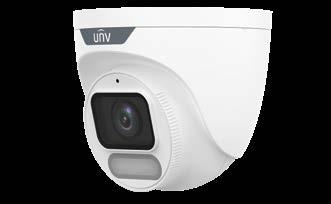
The OwlView series products are part of the EasyStar entry-level series. Thus, it is possible to get advanced hardware and software at a cost-effective price.
Other IR cameras can lose color information at night while white light cameras will result in white light pollution. To improve this, the OwlView series

The OwlView series products are part of the EasyStar entrylevel series. Thus, it is possible to get advanced hardware and software at a cost-effective price
provides users with the most realistic color images without the need for supplementary light.
The new naming rule uses “-WP “ to denote Wise-ISP products. The OwlView series products in the EasyStar series have 4MP resolution and include bullet, turret, and dome models. All of them use a 1/1.8 sensor and F1.0 lens. The whole series supports Ultra Motion Detection (based on human and vehicle) technology which makes it possible to distinguish the targets easily and save time when going through playbacks. OwlView series products have no infrared lights. The bullet and turret models have two warm lights while the dome model doesn’t feature these. This is the first dome-shaped product in the UNV color camera series.
Firstly, the OwlView series reduces light pollution. Traditional full-color IPCs keep the lights on throughout the night, which can be glaring and disrupt people’s rest. However, the OwlView series can supply color images without supplementary light, thereby minimizing light pollution. Additionally, it ensures that crucial details of people and vehicles are not lost and that cameras can capture colorful details. Therefore, this series is suitable for dark and white light-sensitive areas and so on. n
The integration between TRASSIR and Suprema brings together advanced video surveillance and biometric access control to offer the Middle East market a unified, scalable, and customizable security platform
n Source: Trassir editorial@asmideast.com
In an era of rapidly evolving security threats, businesses and industries across the Middle East face unprecedented challenges. From large-scale retail operations and banking institutions to sprawling industrial complexes and smart cities, the demand for comprehensive, intelligent, and integrated security solutions has never been greater. TRASSIR, a leading company in providing video surveillance solutions, is now elevating its capabilities by integrating Suprema’s advanced biometric and access control technology. This partnership aims to offer the region’s businesses and institutions’ market sophisticated and adaptable security.
TRASSIR’s collaboration with Suprema marks a great step in reshaping the security landscape in the Middle East. The integration between TRASSIR’s Video Management System (VMS) and Suprema’s biometric access control solutions delivers a unified security platform that is both scalable and customizable. By merging Suprema’s top-tier biometrics and access control technologies with TRASSIR’s AI-driven video analytics, this partnership provides a seamless approach to security management. The combined system allows for real-time synchronization between access control events and surveillance footage. This means any access event, such as an unauthorized entry attempt, is automatically linked with
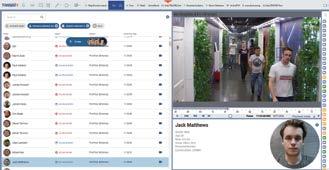
corresponding video footage, making it easier to monitor and respond to potential threats. Whether it’s safeguarding retail stores, manufacturing sites, government facilities, or educational institutions, TRASSIR’s integrated solutions are designed to meet the specific demands of each industry.
Founded in 2002, TRASSIR has spent over two decades refining its expertise in video surveillance and security solutions, particularly in AI-based video analytics. With offices spanning the UAE, Turkey, India, and Russia, TRASSIR’s products are globally recognized for their innovation, reliability, and scalability. The company’s core philosophy centers on providing future-proof security solutions that not only protect but also evolve alongside emerging technologies and threats.
Suprema, ranked among the top 50 security manufacturers worldwide, is a market leader in biometrics and access control across the EMEA region. Suprema’s BioStar 2 platform, widely used in sectors such as banking, government, healthcare, and infrastructure, is now fully integrated with TRASSIR’s VMS, enabling seamless communication between the two systems.
The TRASSIR and Suprema integration offers a range of features that simplify security management, making it more efficient and responsive.
One of the standout features is the real-time event synchronization, where TRASSIR captures authentication events from Suprema devices, logs them, and links them with corresponding video footage from connected

cameras. Additionally, comprehensive event information—such as the type of authentication, date, and time—is logged in TRASSIR’s Event Log for easy access and review. Another key feature is access control video linking, which automatically associates terminal events from Suprema with the video footage from TRASSIR’s connected cameras.
Looking ahead, the partnership will soon introduce several enhancements that promise to streamline security management even further. The integration will provide more detailed event information, including the individual’s data and access point, facilitating easier activity tracking. Security personnel will gain the ability to control doors directly through the TRASSIR interface, allowing for more hands-on management. Advanced automation options will enable businesses to create intricate security scenarios with custom scripts. The system will also allow for the capture and saving of event screenshots for enhanced documentation, and integrated alarm monitoring will offer more robust security operations overall.
TRASSIR’s solutions are designed with the specific needs of the Middle East market in mind, particularly in countries like Saudi Arabia, the UAE, and Morocco. This region’s unique blend of rapid urbanization, smart city initiatives, and large-scale infrastructure projects requires security solutions that are both adaptable and scalable. The TRASSIR and Suprema partnership addresses these needs by offering highly customizable solutions that can be tailored to various industries, from retail to government projects. For example, if an unauthorized person attempts to access a restricted area, the TRASSIR system can automatically trigger
alarms, record video, send notifications, and even activate physical security devices such as locks or barriers. The integration of Suprema’s biometric data allows for more secure authentication, ensuring that only authorized personnel have access to sensitive areas. This approach is crucial for industries like banking and healthcare, where the security of sensitive data and assets is paramount.
One of the standout features of the TRASSIR and Suprema integration is the creation of a unified operations center. This allows security teams to manage access control, monitor video footage, and automate responses all from a single platform. Suprema’s advanced biometrics, combined with TRASSIR’s intuitive VMS, make it easier for businesses to create secure environments without the need for multiple disconnected systems. Suprema’s open REST APIs provide unmatched flexibility, enabling TRASSIR clients to customize their security infrastructure to their exact needs. Whether it’s linking access control events with video surveillance, automating responses through TRASSIR’s scripting engine, or creating complex security workflows, the integration offers limitless possibilities for enhancing security operations.
With a growing emphasis on automation, TRASSIR is taking security management to the next level. Customers can automate specific actions based on triggers, such as sending emails with video clips or adjusting server settings when certain events occur. This ability to create custom security workflows not only enhances operational efficiency but also ensures that businesses can respond to security threats more effectively.
TRASSIR’s solutions are designed with the specific needs of the Middle East market in mind, particularly in countries like Saudi Arabia, the UAE, and Morocco
Furthermore, TRASSIR’s solutions are future-proof, incorporating modern technologies like AI, machine learning, and advanced analytics. These advancements allow for real-time threat detection and response, ensuring that security systems are always one step ahead of potential risks.
The TRASSIR and Suprema partnership is more than just a technological integration— it represents a new standard in security management. By combining TRASSIR’s video surveillance expertise with Suprema’s biometric access control, businesses across the Middle East can enjoy a fully integrated security experience. If you’re looking to elevate your security system, now is the time to explore the power of TRASSIR’s integrated solutions. Discover how TRASSIR can help you unlock smarter automation, tighter access control, and enhanced video management—all in one powerful platform. Contact our team today to learn more or schedule a live demo.
As businesses in the Middle East continue to evolve, so do their security needs. The TRASSIR and Suprema integration offers a blend of innovation, reliability, and customization, ensuring that businesses across the region have access to the best-in-class security solutions. With this partnership, TRASSIR is poised to become the go-to provider for integrated security systems, offering unmatched scalability, automation, and real-time intelligence. n
ASSA ABLOY
Aperio, part of ASSA ABLOY’s Digital Access Solutions, offers a scalable and eco-friendly wireless locking technology that seamlessly integrates doors into electronic access control systems, providing enhanced security without the need for extensive wiring
n By: Mirza Bahić mirza.bahic@asmideast.com
Aperio, part of ASSA ABLOY’s Digital Access Solutions, is an advanced wireless locking technology designed to digitalize and future-proof buildings, making it easy to integrate more doors into electronic access control systems without wiring. This innovative solution bridges the gap between mechanical and digital security, offering a flexible, reliable, and scalable access control solution.
Aperio devices are built to integrate seamlessly with existing access control systems. The technology allows facility managers to extend security coverage
by wirelessly connecting more doors, saving time and reducing costs associated with hardwiring. The Aperio communication hub connects up to 64 doors within a 25-meter range, offering real-time communication and door status monitoring.
Aperio provides both online and offline integration, enabling real-time door monitoring or access management through stored credentials on access cards. This hybrid model ensures maximum flexibility, allowing organizations to adapt to changing security needs. The locks support multiple RFID and mobile credentials (NFC/BLE), ensuring compatibility with various security systems.
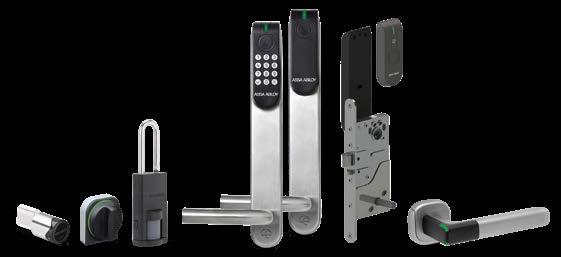
Aperio provides a broad selection of wireless devices tailored to various security needs. The L100 Wireless Lock is a comprehensive solution featuring integrated RFID technology and mobile credentials. For medium-security doors, the E100 Wireless Escutcheon offers easy installation and high user convenience. The H100 Wireless Handle boasts a sleek design, en-

abling secure access to internal doors without the need for drilling.
The C100 Wireless Cylinder is both versatile and effective, particularly for securing cabinets and glass doors. Additionally, the P100 Wireless Padlock is ideal for safeguarding non-standard openings, such as storage containers and toolboxes.
Aperio offers various customization options and functionalities, such as multi-
authentication (PINpad and reader), realtime remote opening, and tamper detection, providing a higher level of security and control. Up to 1,000 users can be granted access even during a temporary system breakdown, ensuring operational continuity.
By reducing the need for extensive wiring and offering long battery life (up to 50 months for most devices), Aperio technology supports green

building initiatives and lowers operational costs.
The Aperio L100 Wireless Lock, a standout in the product line, is equipped with advanced sensors for door and bolt position, tamper detection, and mechanical key override. The L100 can be integrated with a wide range of access systems via AADP or Wiegand hubs, making it a highly versatile solution for demanding environments.
For organizations that require additional security, the **E100 Premium Wireless Escutcheon** offers multiauthentication capabilities, including PIN and RFID, enhancing both user experience and security. These devices ensure seamless integration, providing real-time control while remaining userfriendly and adaptable to various security protocols.
Aperio’s wireless access control solutions represent a significant step towards digitalizing security infrastructure. With its scalable, flexible, and eco-friendly approach, Aperio provides businesses with the tools to enhance security without the burden of rewiring, making it a future-proof solution for modern facilities. Whether used for high-traffic areas, non-standard openings, or sensitive data storage, Aperio ensures robust protection and user convenience. n
OFSEC 2024 brings together over 80 exhibitors from 20+ countries, showcasing the latest technologies and innovations in fire, safety, and security
n By: Orhan Hadžagić editorial@asadria.com
OFSEC 2024 is Oman’s only and most comprehensive exhibition on fire, safety, and security. The exhibition is from 08 - 09 October 2024, from 9 am – 6 pm at the Oman Convention and Exhibition Centre in Muscat.
OFSEC in its 8th Edition will bring together over 80+ exhibitors from over 20 countries who will showcase their avant-garde solutions, latest technologies, cuttingedge innovations, cost-effective products, and services to meet the requirements of governments, businesses, industrial and commercial entities, aviation, construction, infrastructure, transportation, manufacturing, oil and gas, and utility sectors.
OFSEC is designed to meet the needs of the local, regional, and international markets by linking practitioners, suppliers, distributors, and manufacturers from the fire, safety, and security industry, with key decision-makers from the government and private sectors making it a definitive networking platform, where new projects and partnerships are initiated and visionary objectives are implemented. This event also aims to create synergy and strengthen the collaboration between the authorities and the industries.
The event will lay the foundation and be the gateway to the current and future

market trends in the fire, safety, and security sectors, for the industry professionals to communicate, share ideas, identify solutions, operate effectively and efficiently, and stay abreast with the latest global trends. OFSEC will confluence and strengthen local and international business engagement and encourage investment.
The OFSEC Summit will feature an expansive line-up of 30+ high-profile speakers, case studies, panel discussions, and unique presentations providing access to a wealth of industry-leading knowledge, sharing best practices and experiences, spotlighting trends, information
exchange, insights, and outlooks with actionable takeaways.
The Summit is the definitive meeting place facilitating multi-stakeholder dialogue with power-packed networking opportunities among C-Level executives, leading industry experts, decision-makers, policymakers, and government officials from across the value chain to foster collaboration, discuss current challenges, and business opportunities, develop market strategies, share knowledge and identify solutions aimed at shaping the future of fire, safety and security.
The OFSEC event offers a range of compelling reasons for attendance, including the opportunity to source tailored solutions for your business, witness live inter-

active demonstrations, explore cuttingedge innovations, and compare product variants in terms of price and specifications. Attendees will also have the chance to meet specialist exhibitors from leading companies across the local, regional, and international markets.
OFSEC is officially backed by key authorities such as Oman’s Civil Defense and
Ambulance Authority, Ministry of Labor, Muscat Municipality, and Emirates Safety Laboratory, under the Dubai Civil Defense Directorate. Supporting associations include Advantage Austria, the Arab Institute for Safety Sciences, The Chartered Institute of Building, the Dubai Council for Marine & Maritime Industries, the Firestop Contractors International Association, and more.

Prominent sponsors add further value to the event. Petroleum Development Oman is the Presenting Sponsor, while Middle East Wealth’s LLC takes the Lead Sponsor role. Diamond Sponsors include Majees Technical Services, Modern Technology Projects Distribution, Pointer LLC from Oman, and Ras Laffan Emergency & Safety College from Qatar. Platinum Sponsors such as Electroman LLC, Bahwan Services, and Rosenbauer from Austria bring additional prestige. Gold Sponsors include Al Khalili Group, Green Light International LLC, and Emirates Fire Fighting Equipment Factory.
Associate sponsors, such as Al Aman Fire Fighting Equipment and Mobius Star Electronic LLC, further underscore OFSEC’s wide-reaching support across sectors.
With strong backing from industry leaders, government authorities, and key sponsors, OFSEC stands out as a mustattend event for anyone looking to stay ahead in the safety, security, and fire protection sectors. It offers great opportunities to discover innovations, connect with experts, and find the right solutions for one’s business needs. n







8th edition
08 - 09 October 2024
venue: Oman Convention & Exhibition Centre Muscat, Sultanate Of Oman















Intersec Saudi Arabia
1-3 October 2024, Riyadh, KSA
Key Security Events in 2023
https://intersec-ksa.ae.messefrankfurt.com/ ksa/en.html

OFSEC, Oman
8-9 October 2024, Muscat, Sultanate of Oman
https://www.ofsecevent.com
Adria Security Summit Powered by Intersec
9-10 October 2024, Sarajevo, Bosnia and Herzegovina
https://www.adriasecuritysummit.com

Regional Cybersecurity Week 2024
27-30 October, 2024, Muscat, Oman
https://rcssummit.com

ICCC 2024
4-6 November 2024, Doha, Qatar
https://iccconference.org/

ISAF Fuari
10-13 October 2024, Istanbul, Turkey
https://www.isaffuari.com

Milipol Qatar
29-31 October 2024, Doha, Qatar
https://www.milipolqatar.com/en

ANTICIPATE LONDON
2-4 December 2024, London, UK
https://www.anticipate-event.com/london/ en/home.html



















•
•
•
•
•
•
•
•
Software
Smart
Building




Improve security standards through the implementation of laws, standards and international best practices in security systems as well as security management and guarding services.

SIRA now has more than 60,000 members working within the Dubai security industry, with the agency’s laws and guidelines helping to ensure that standards are continuously kept high
